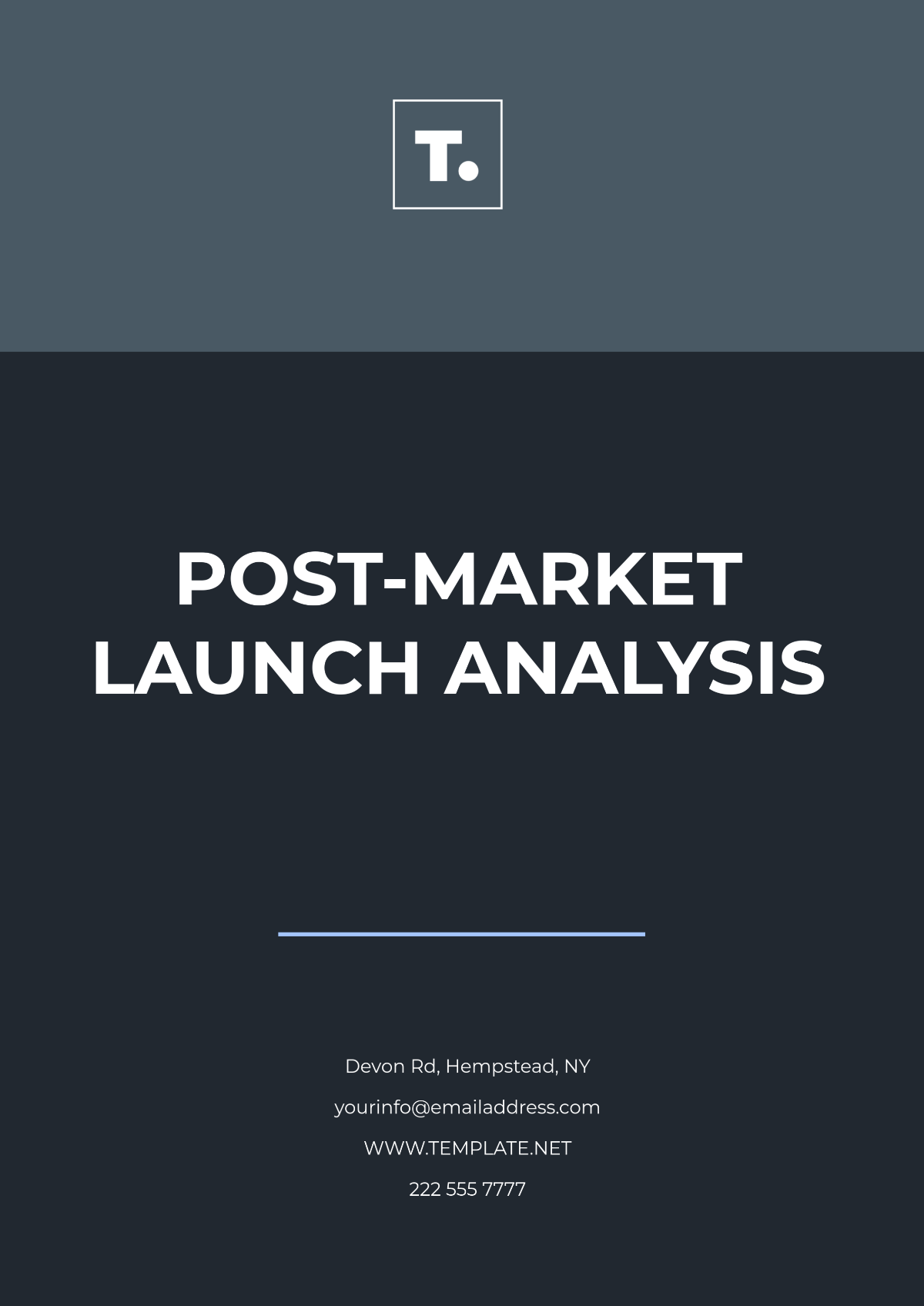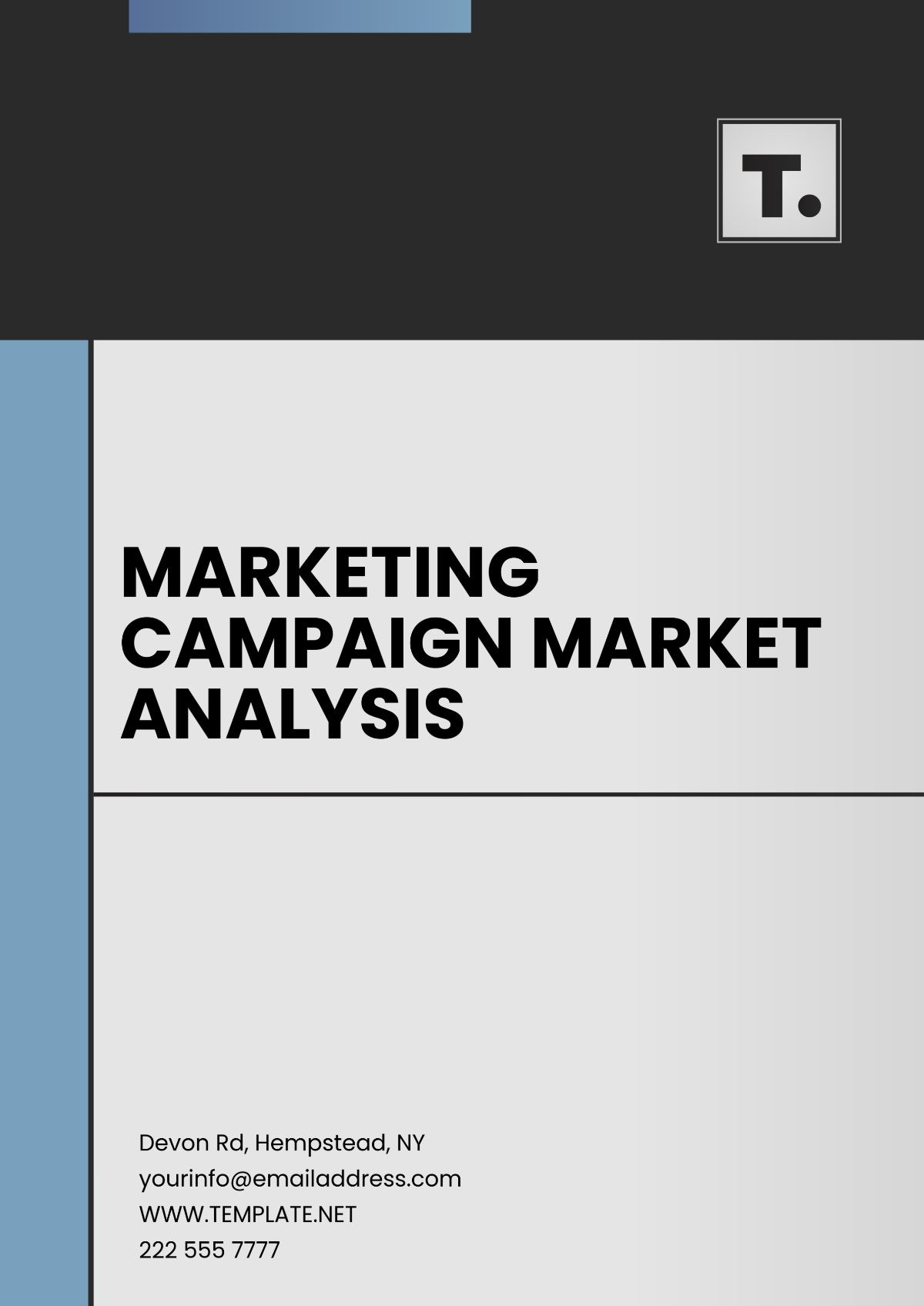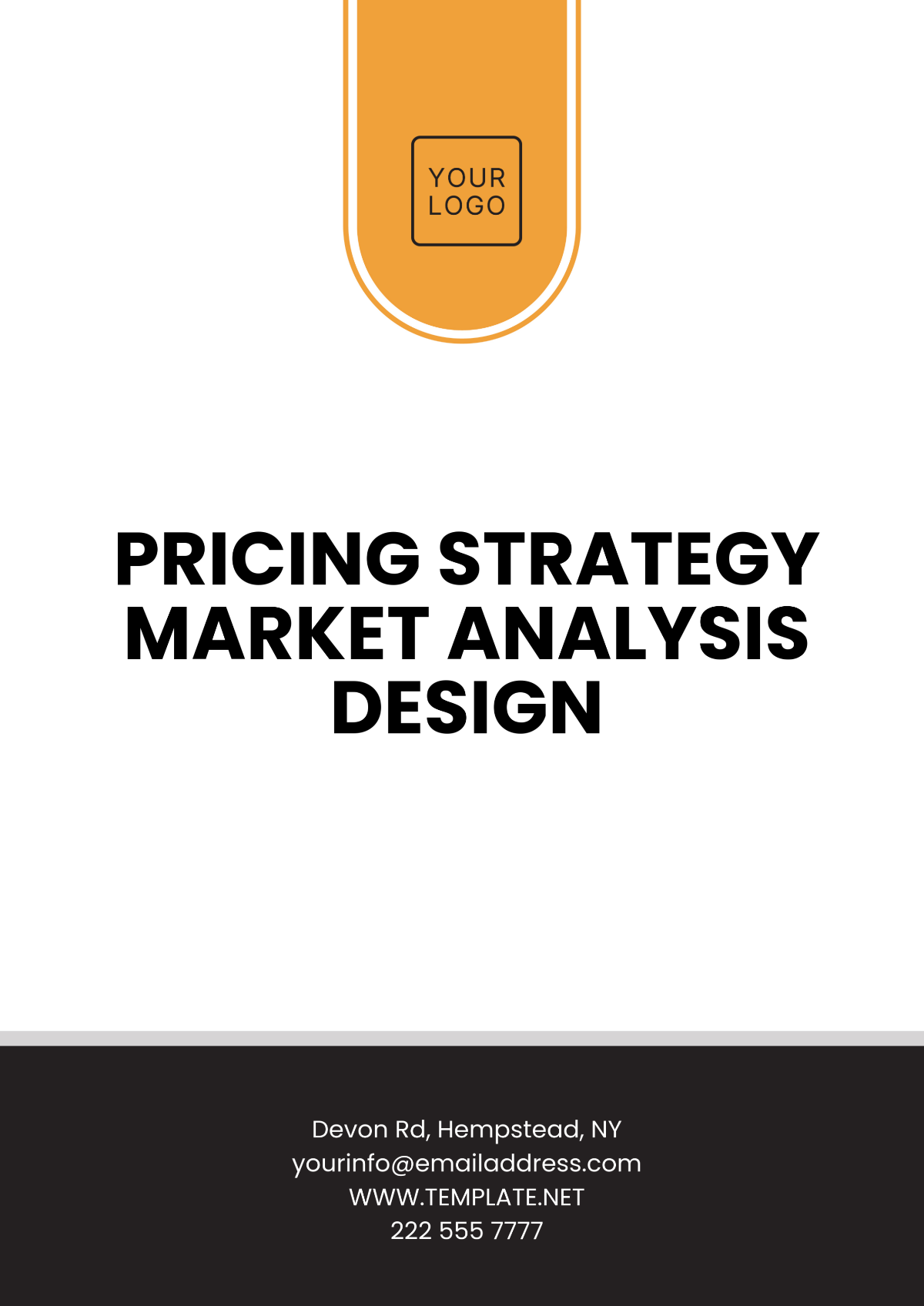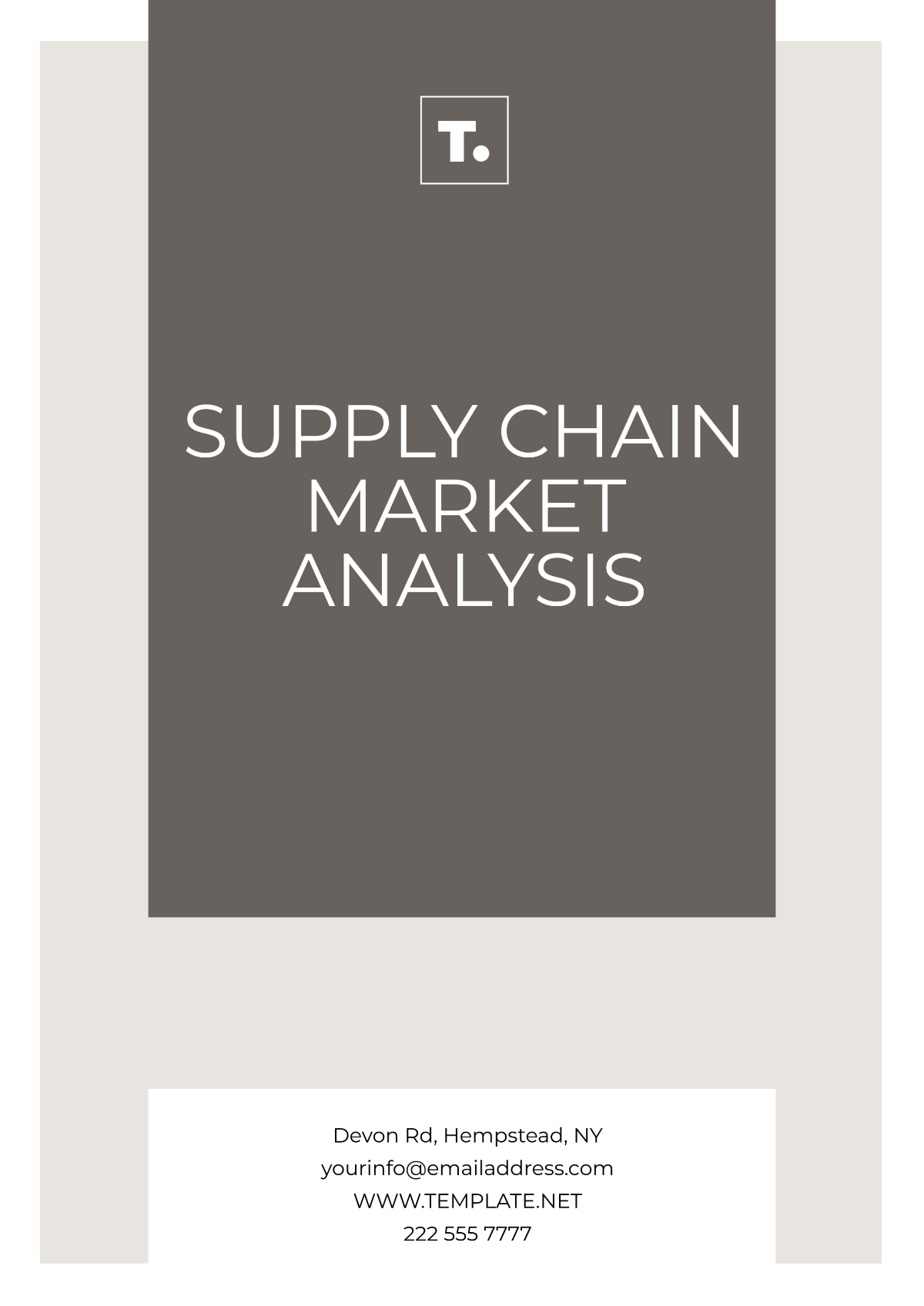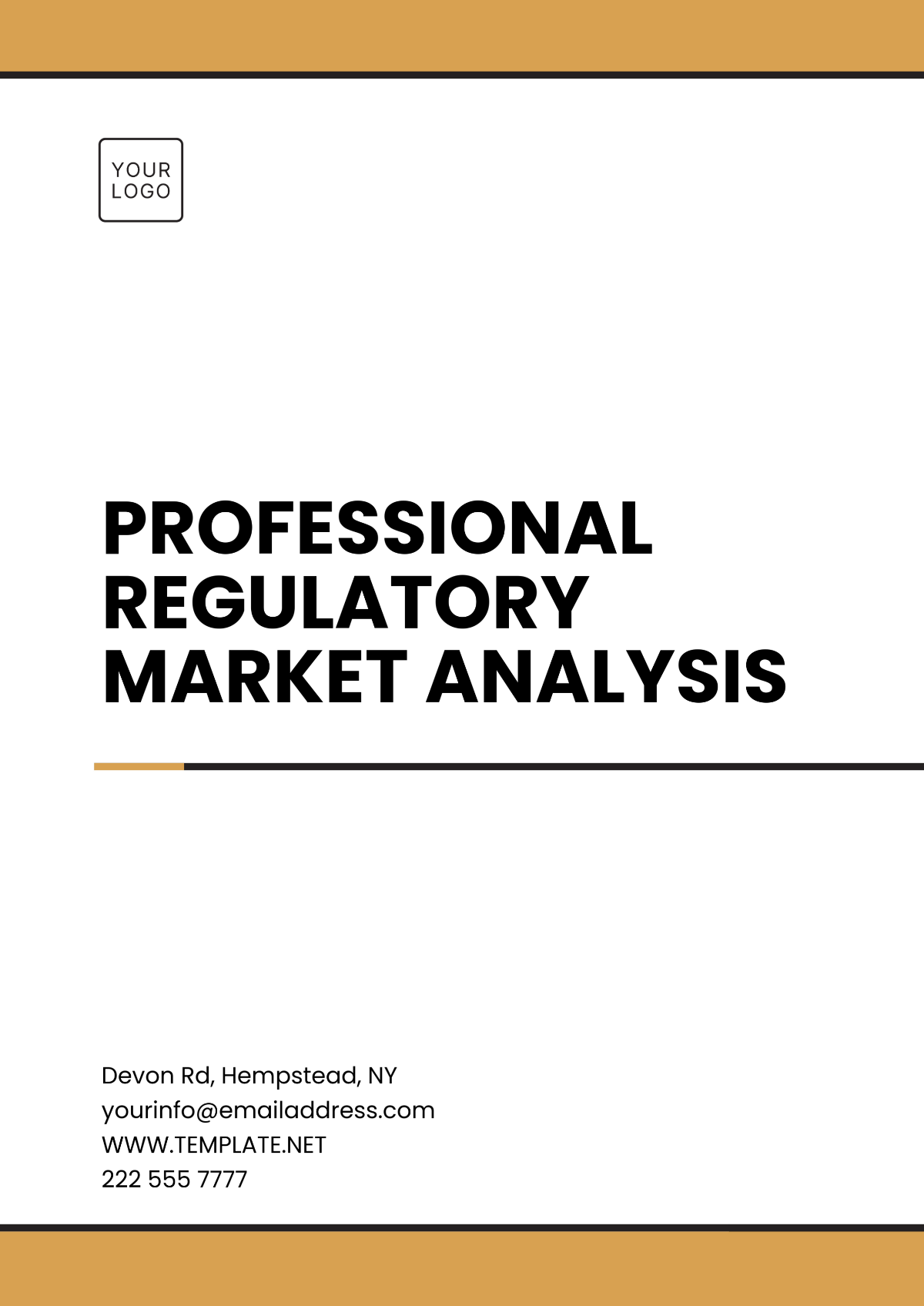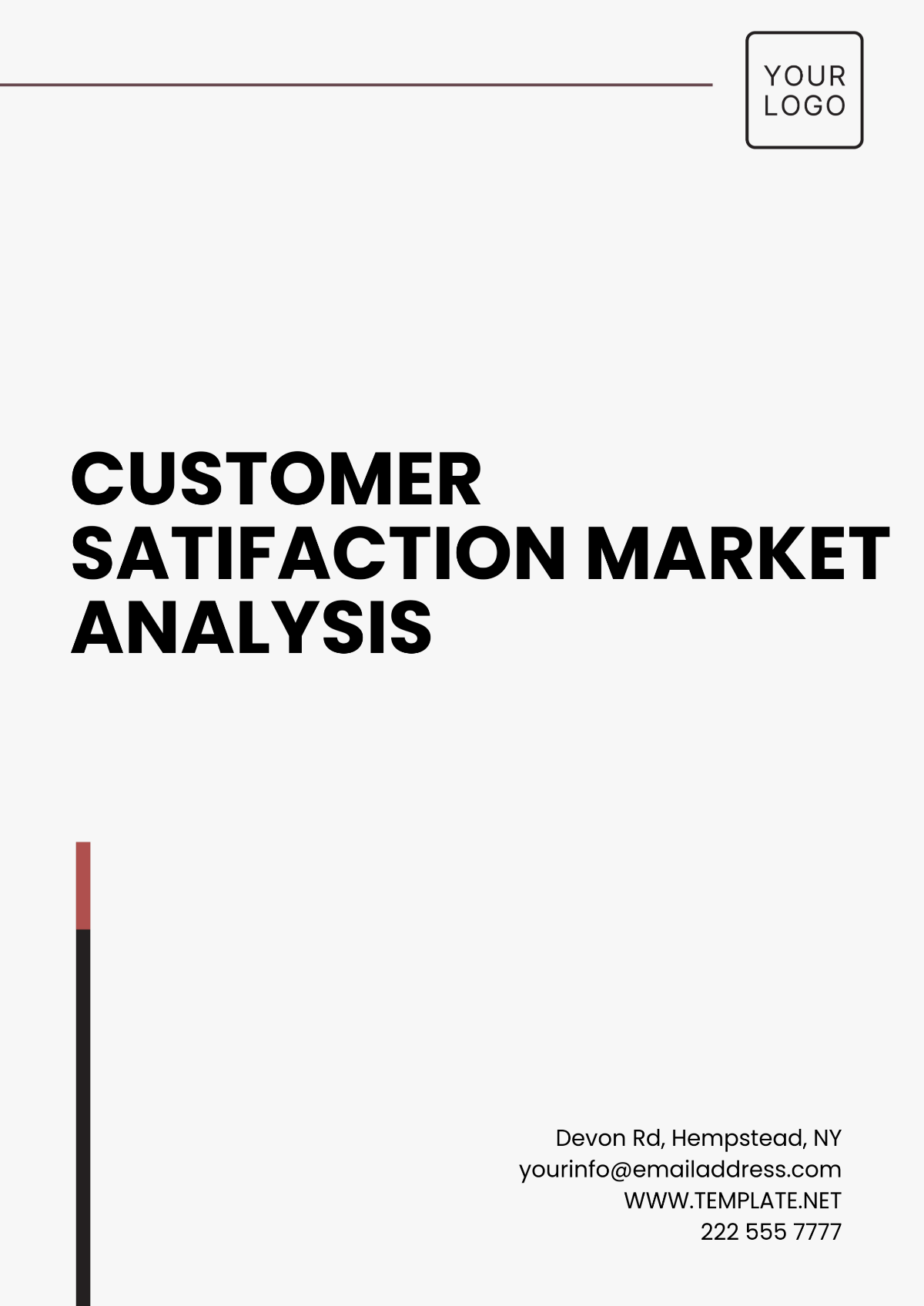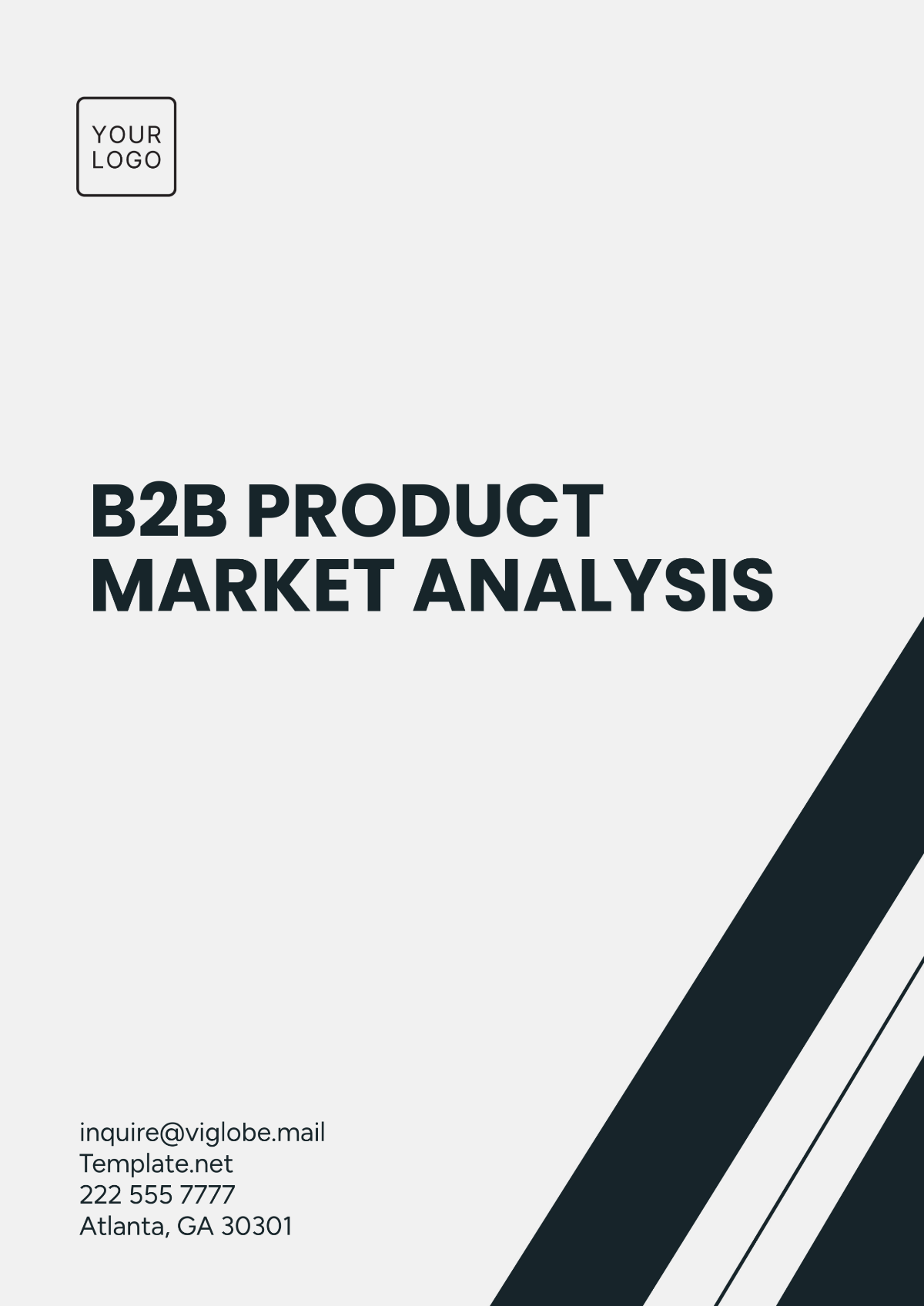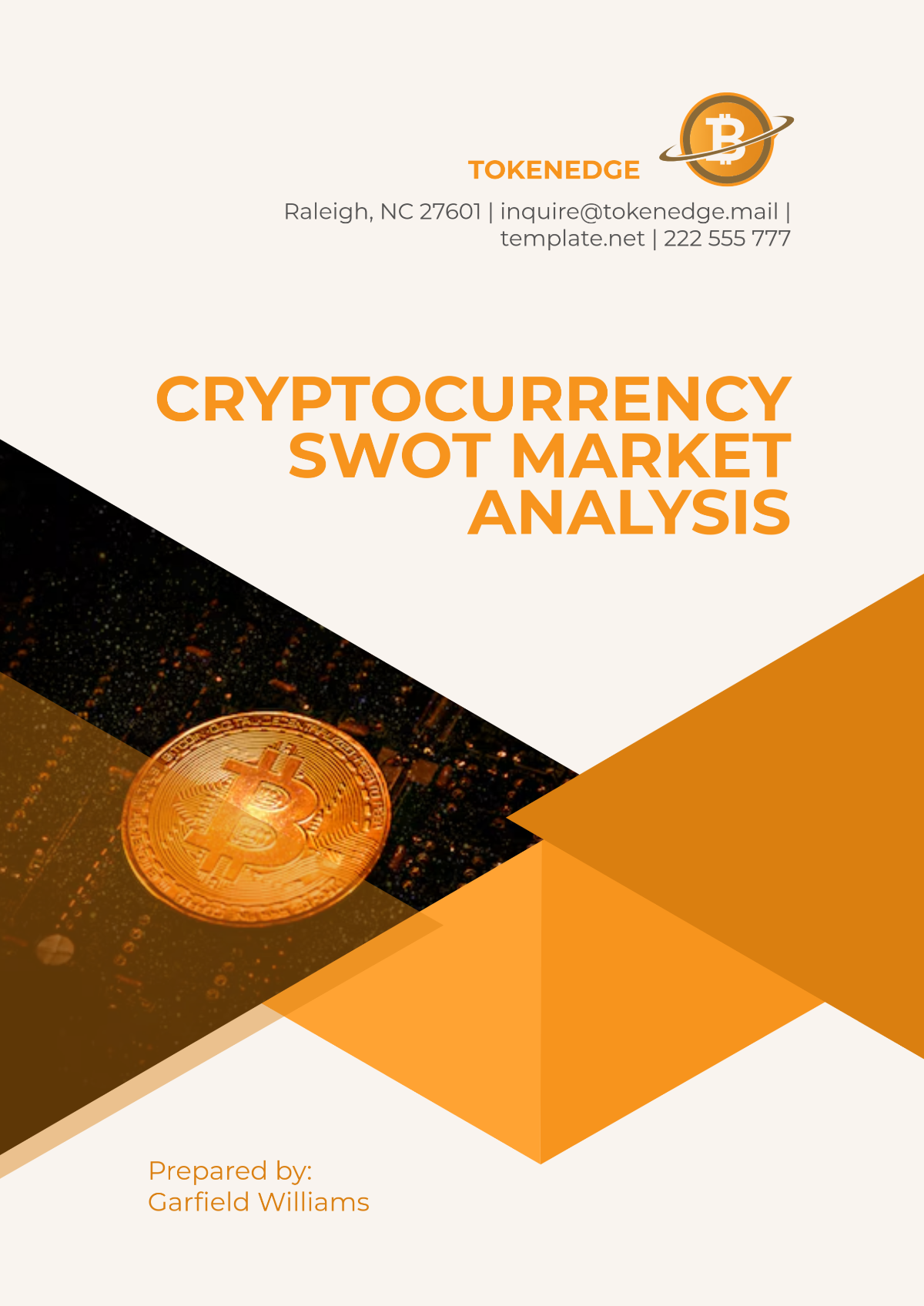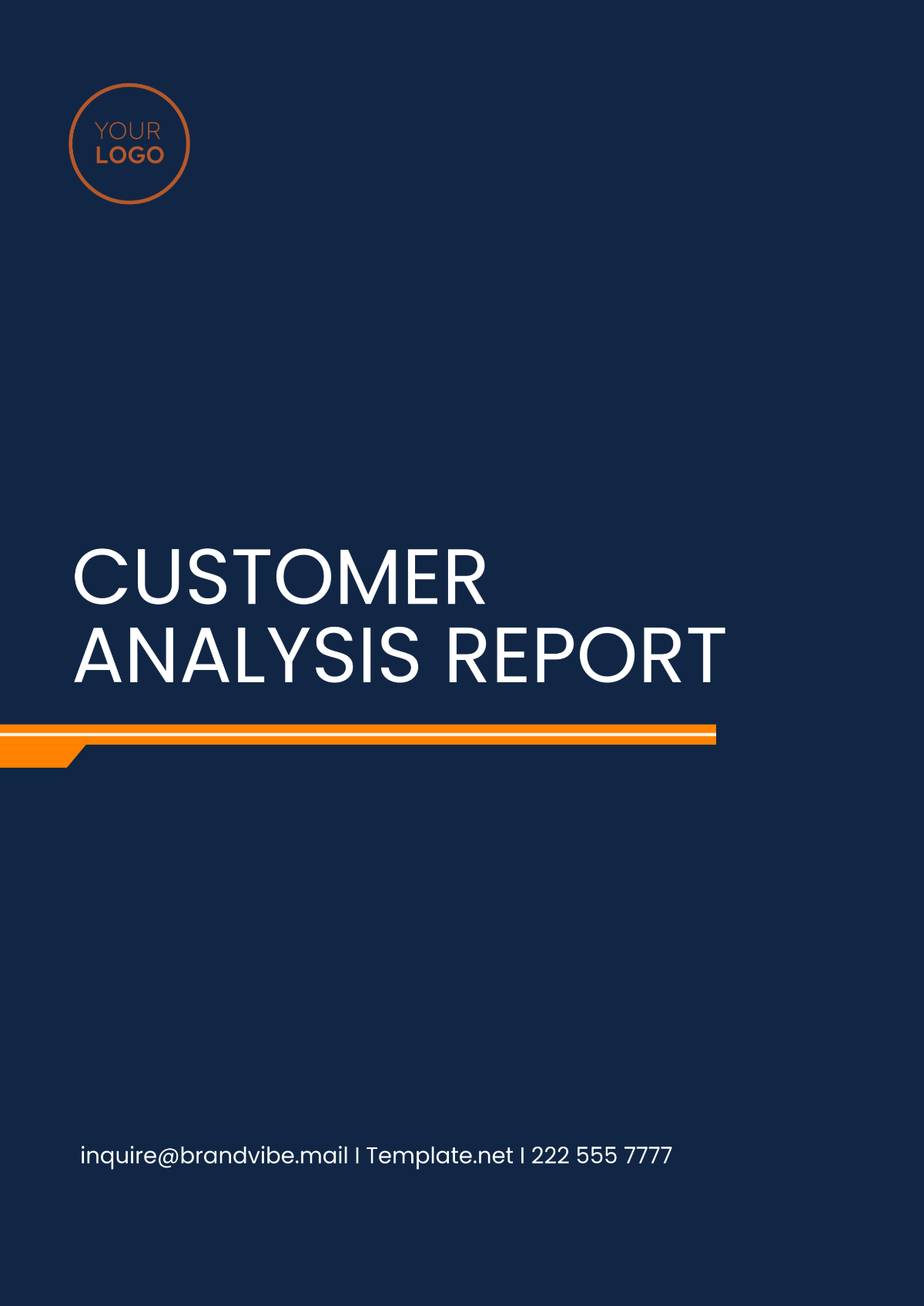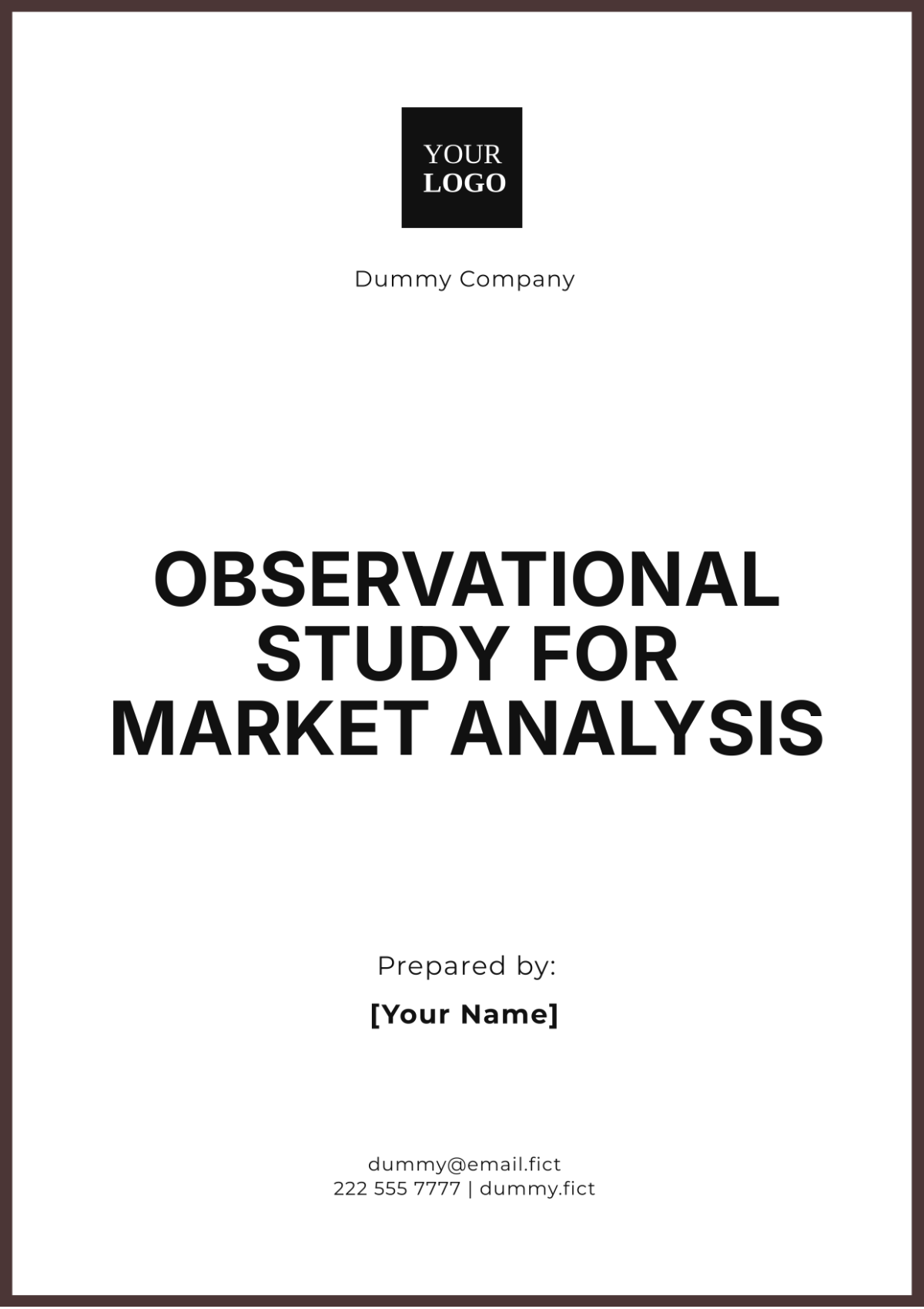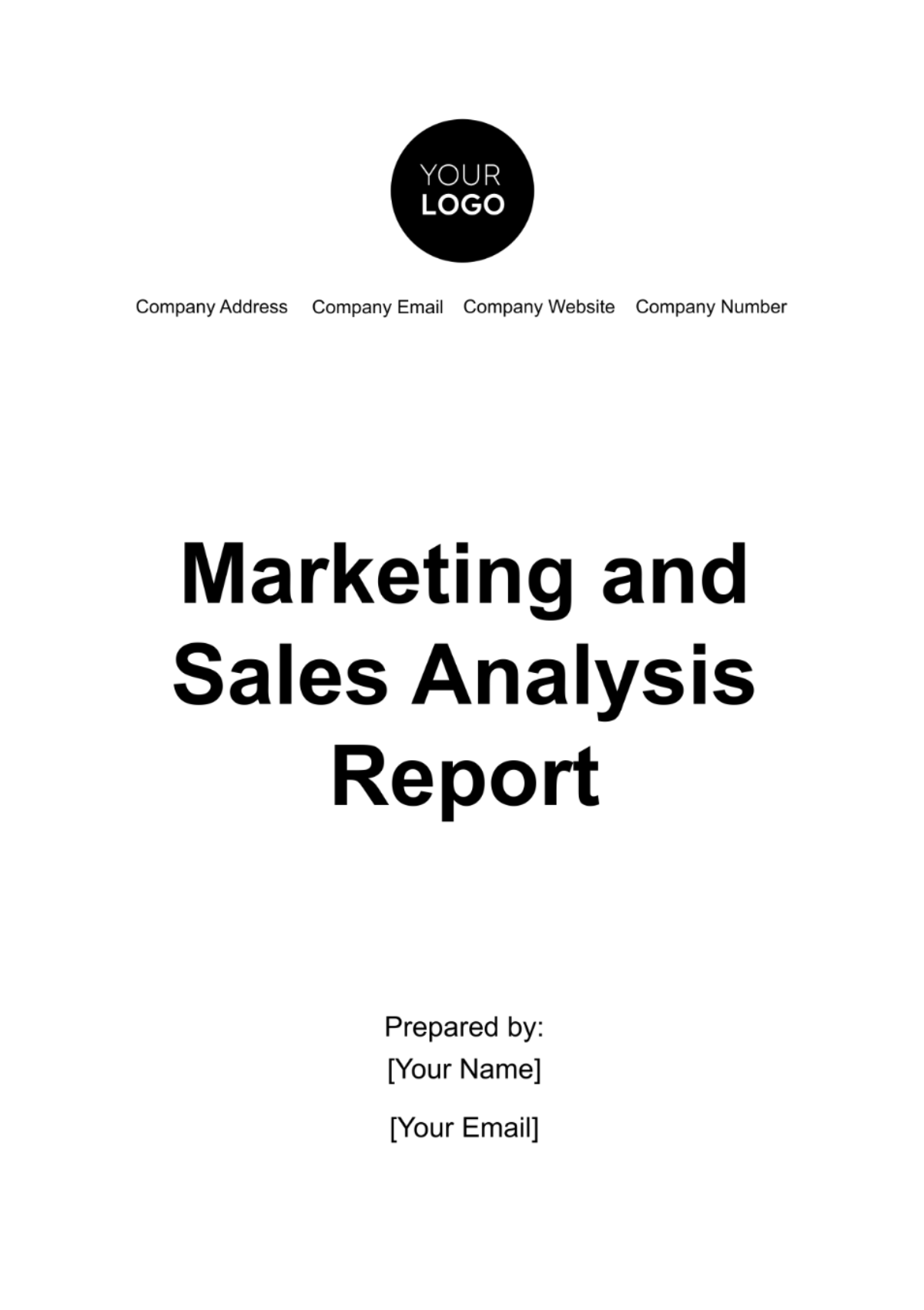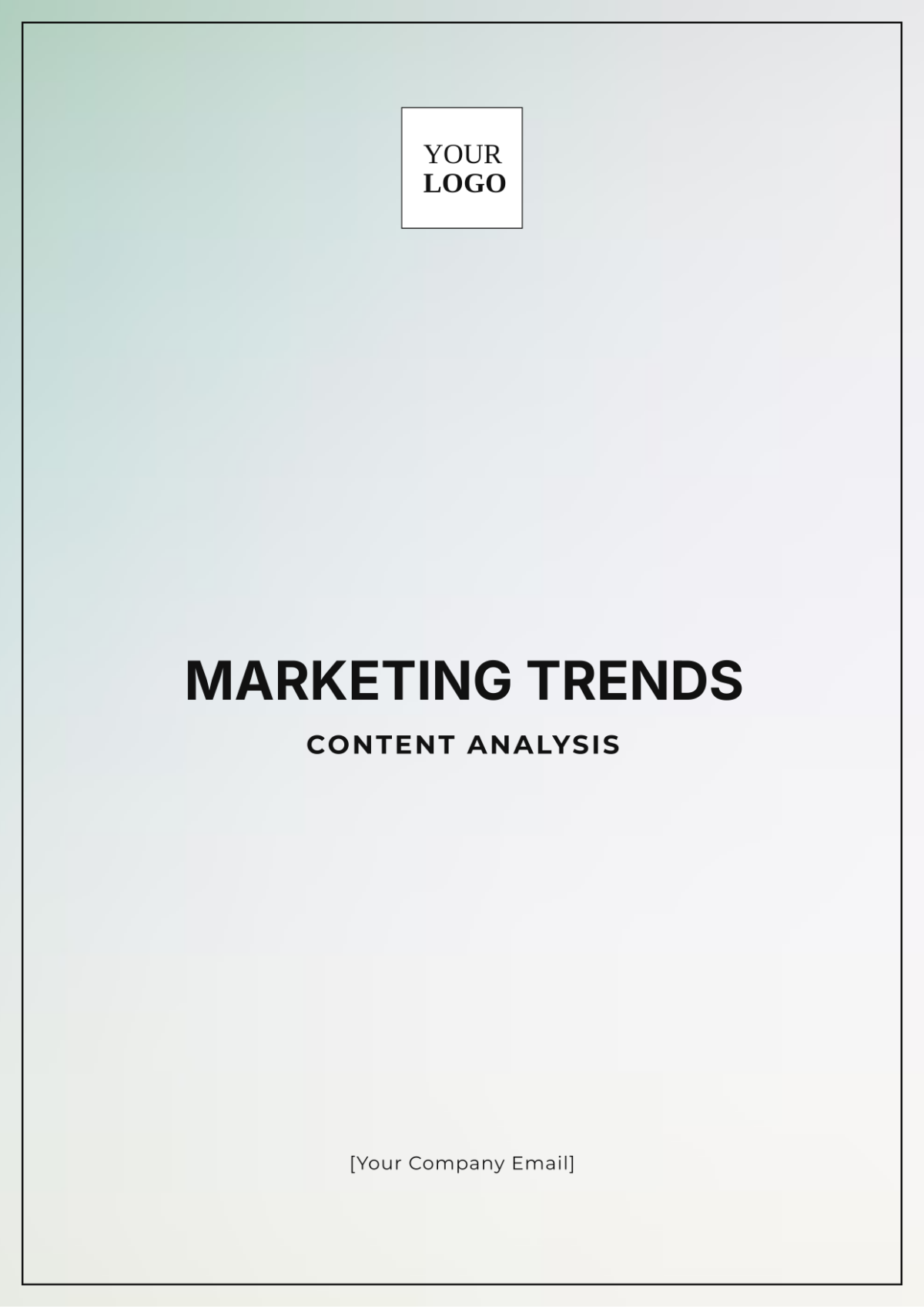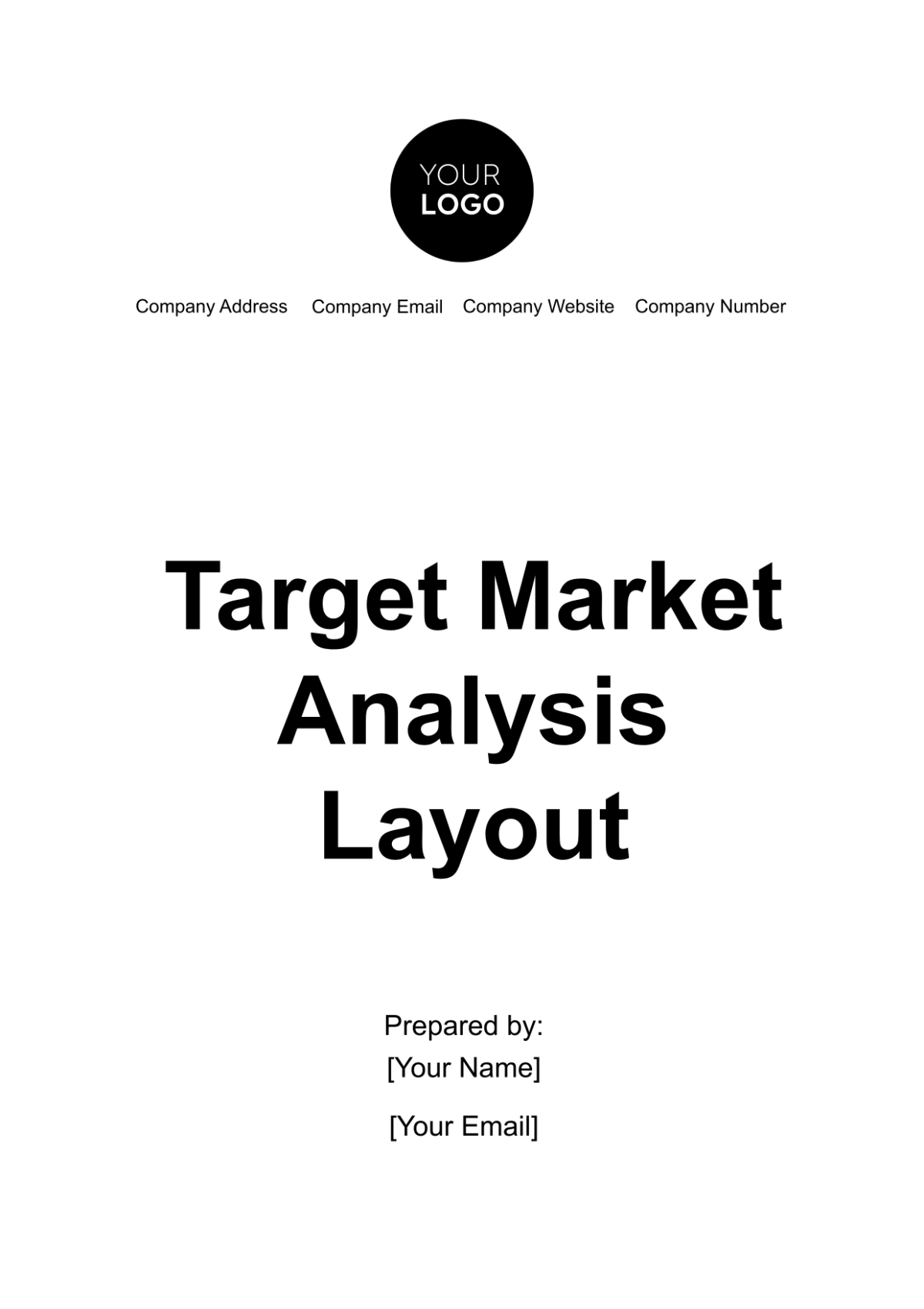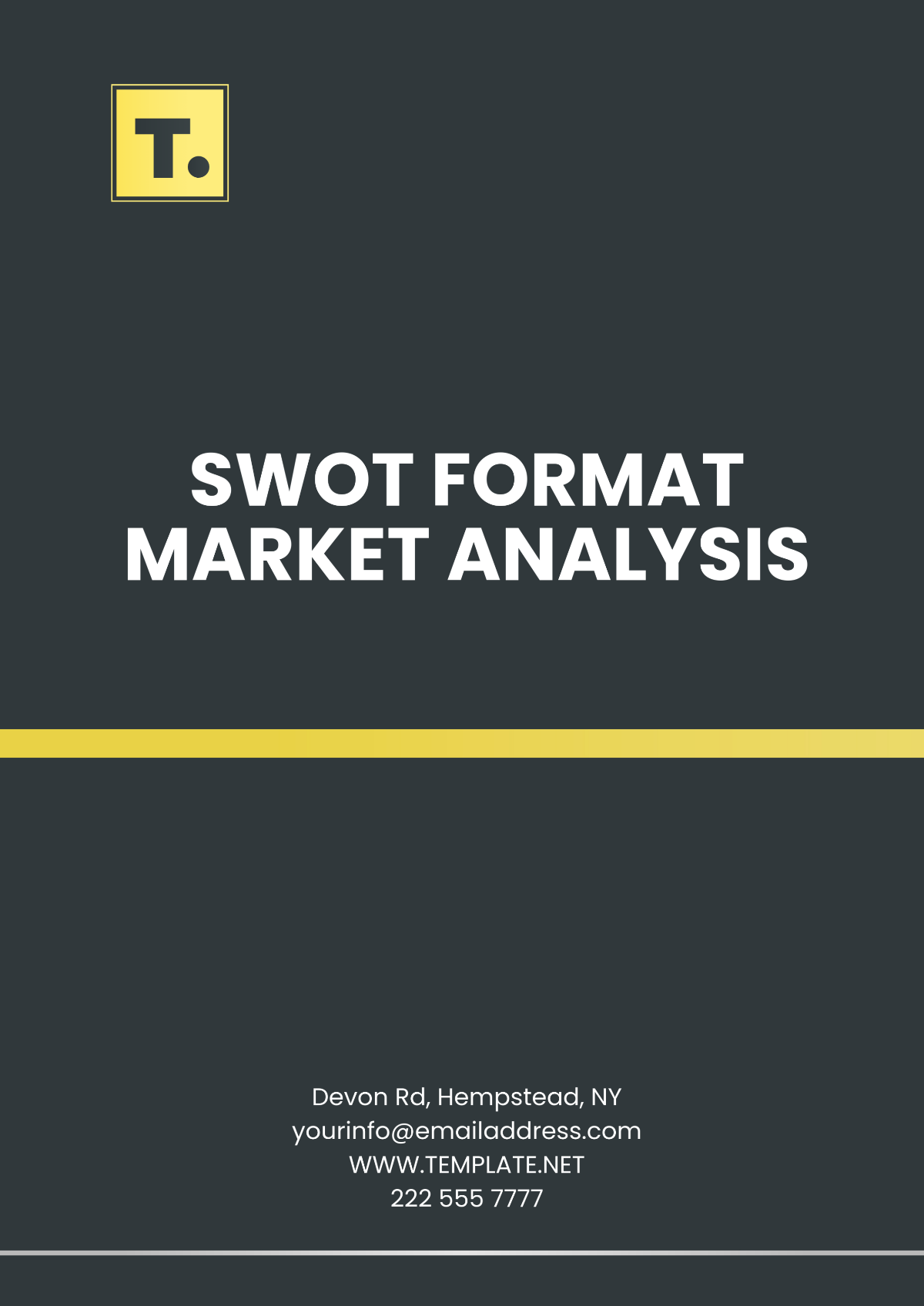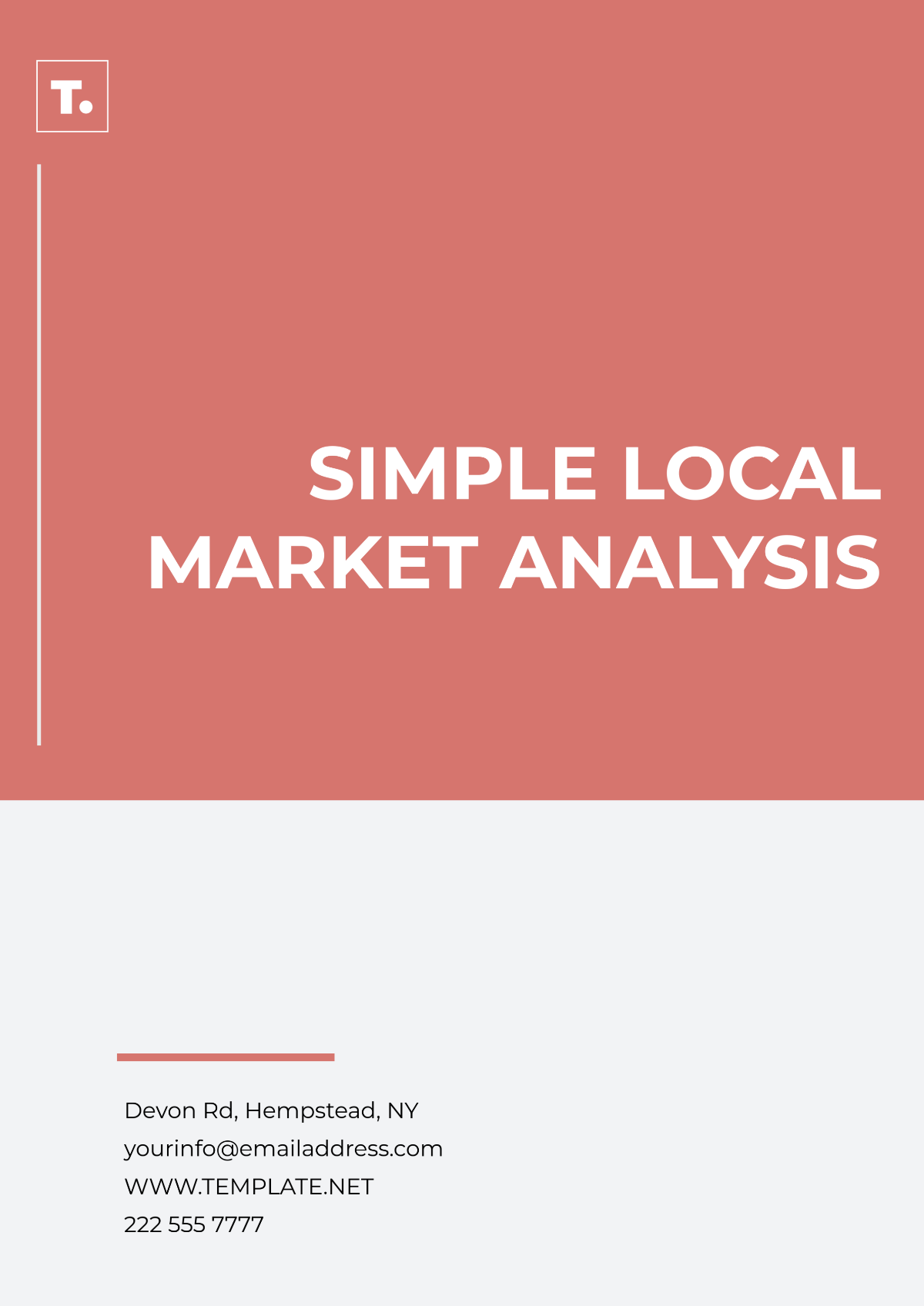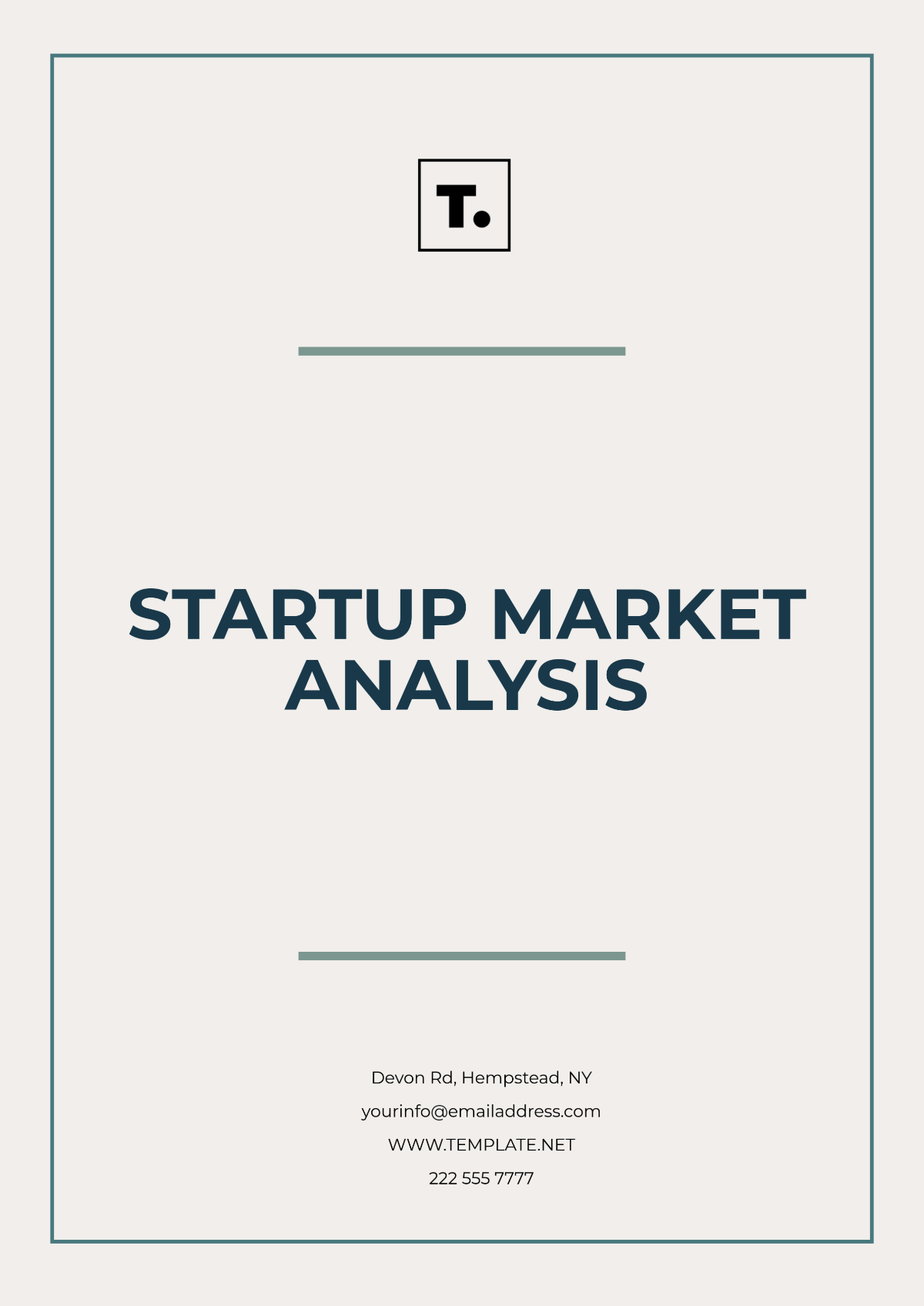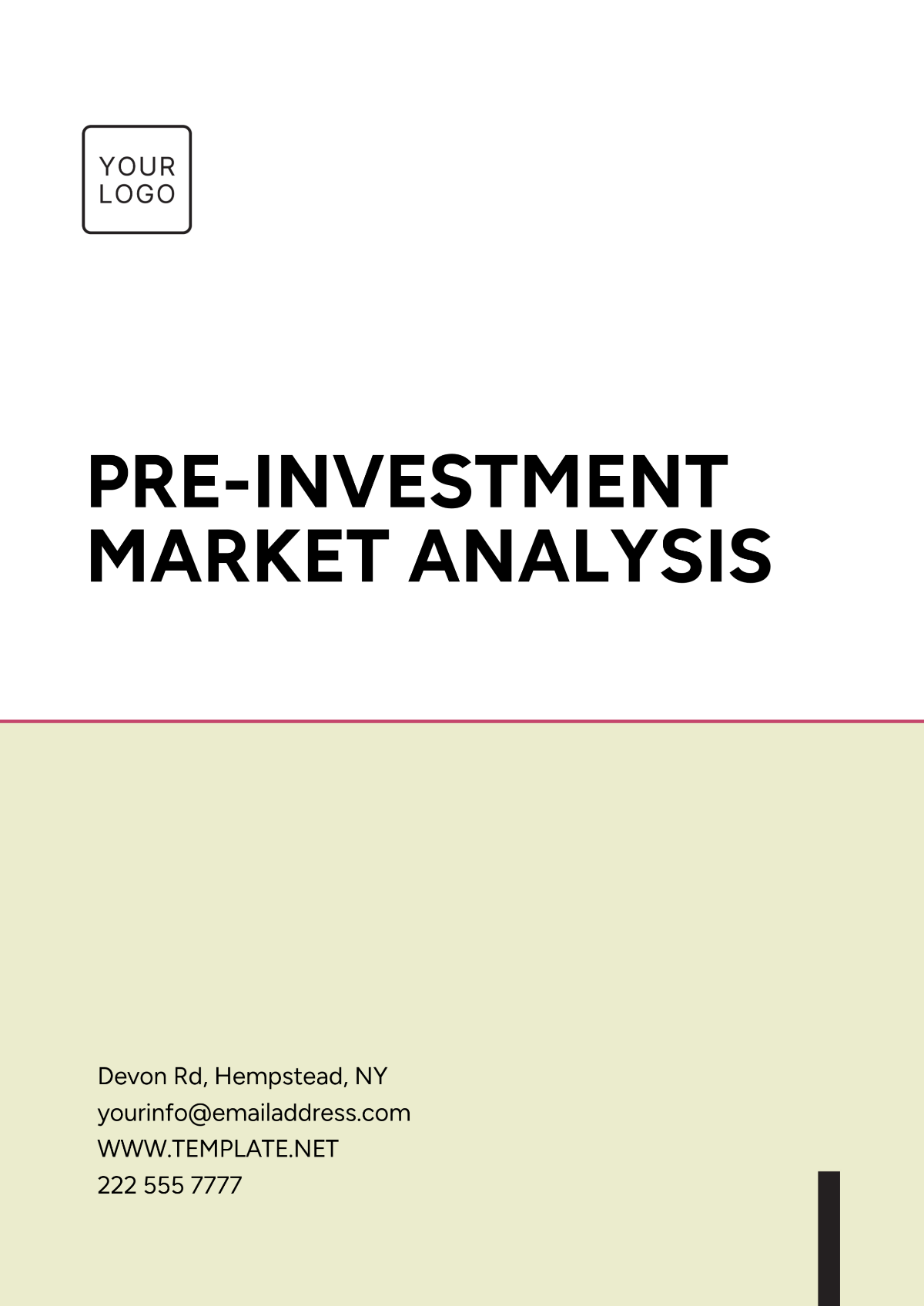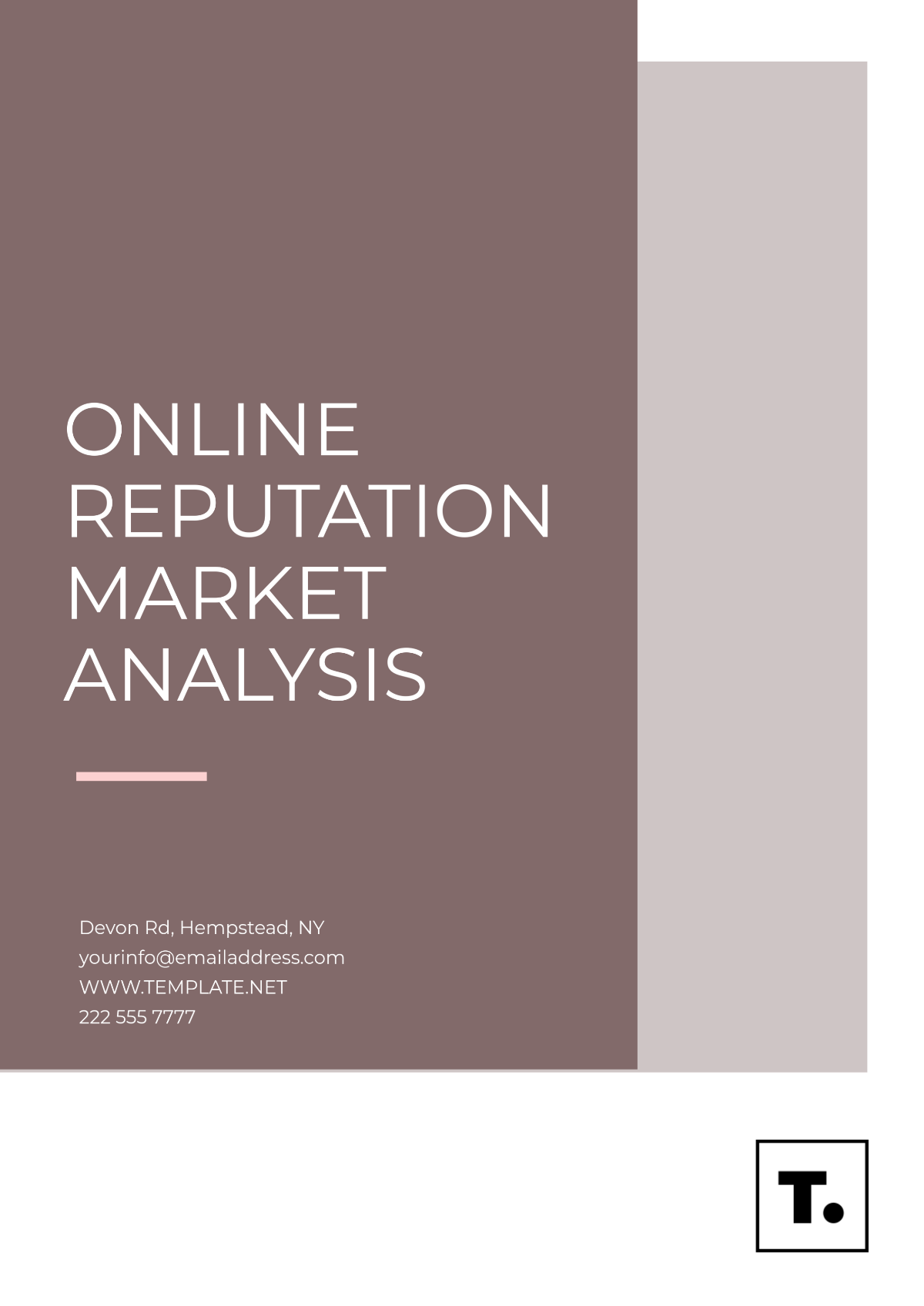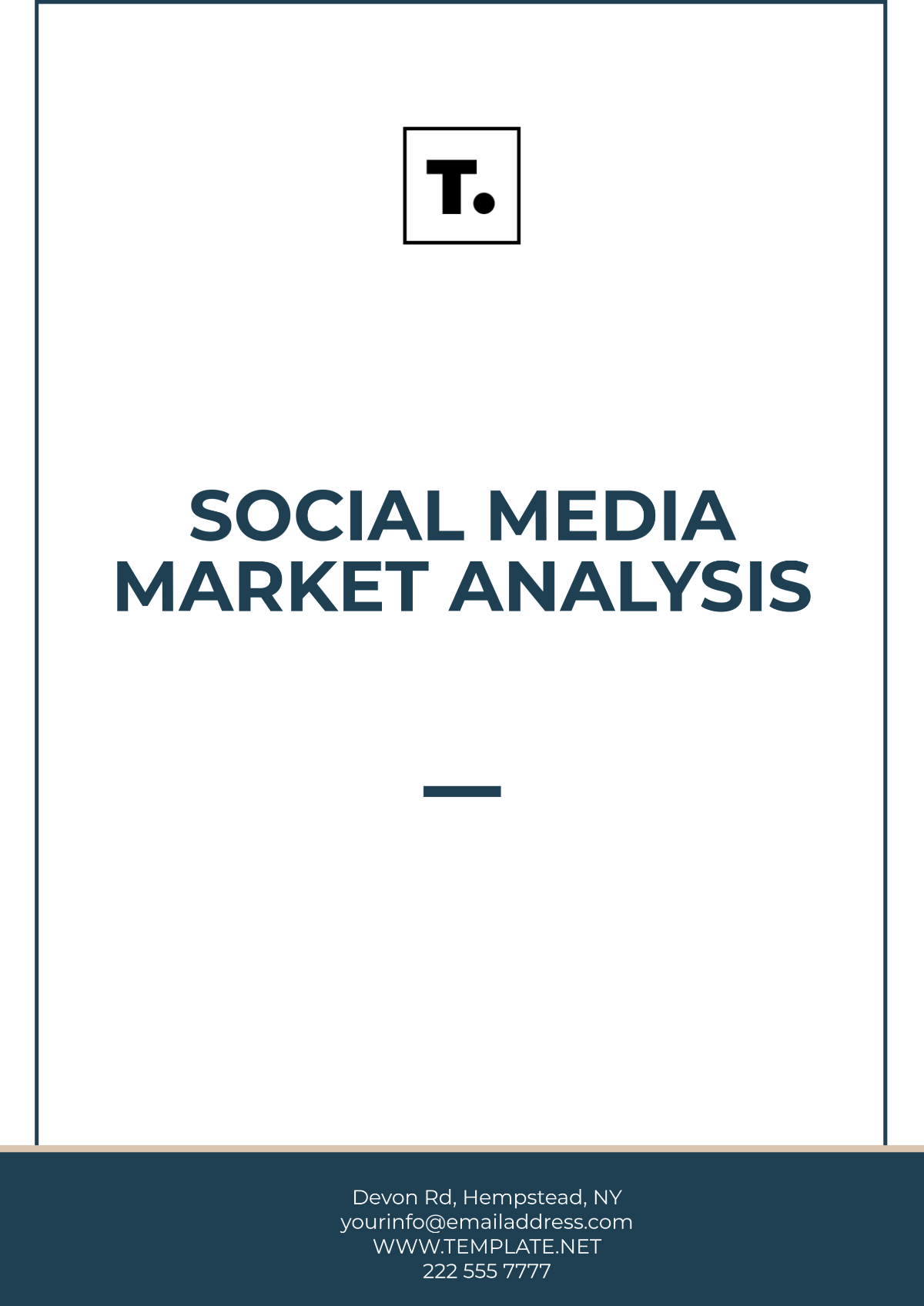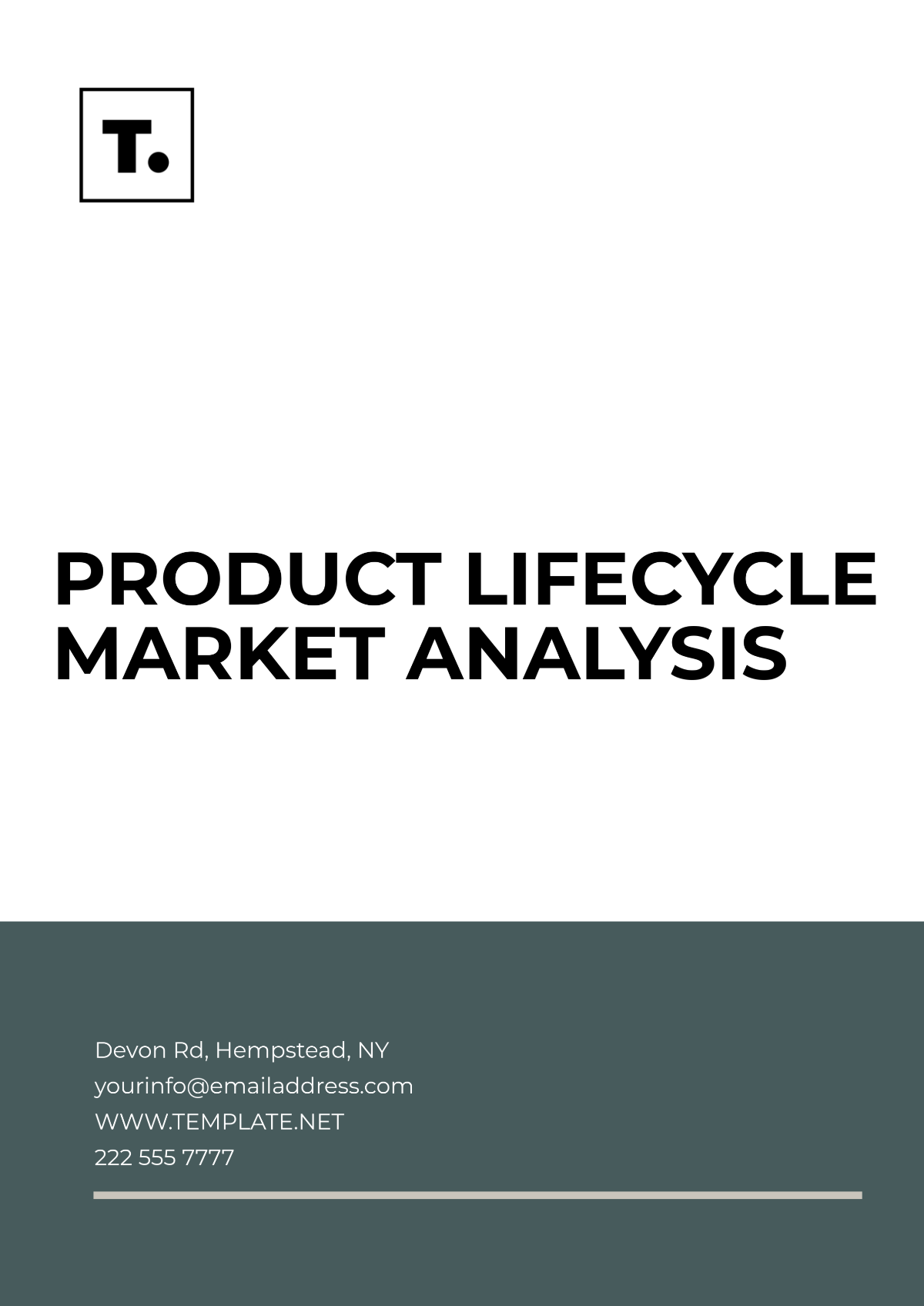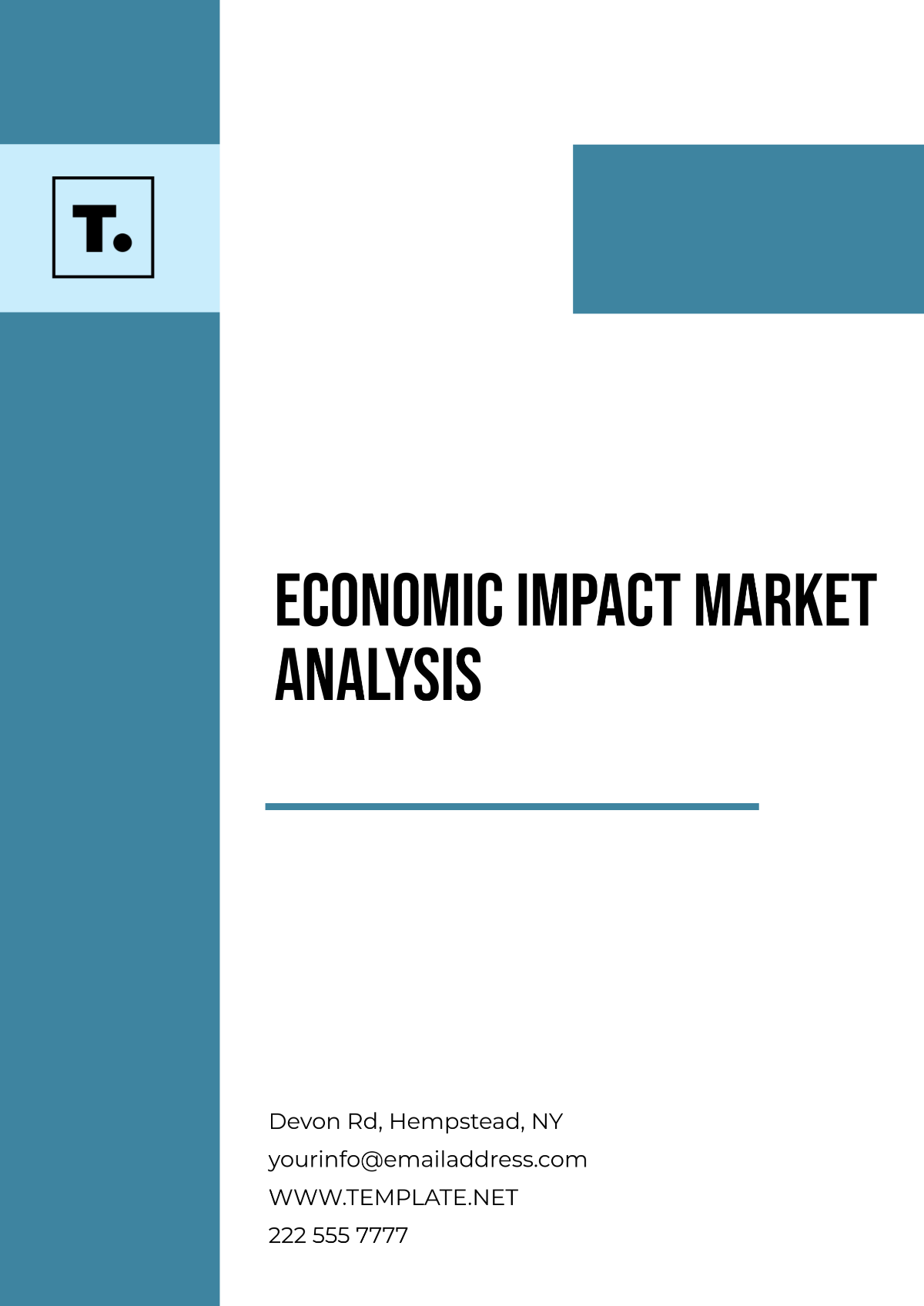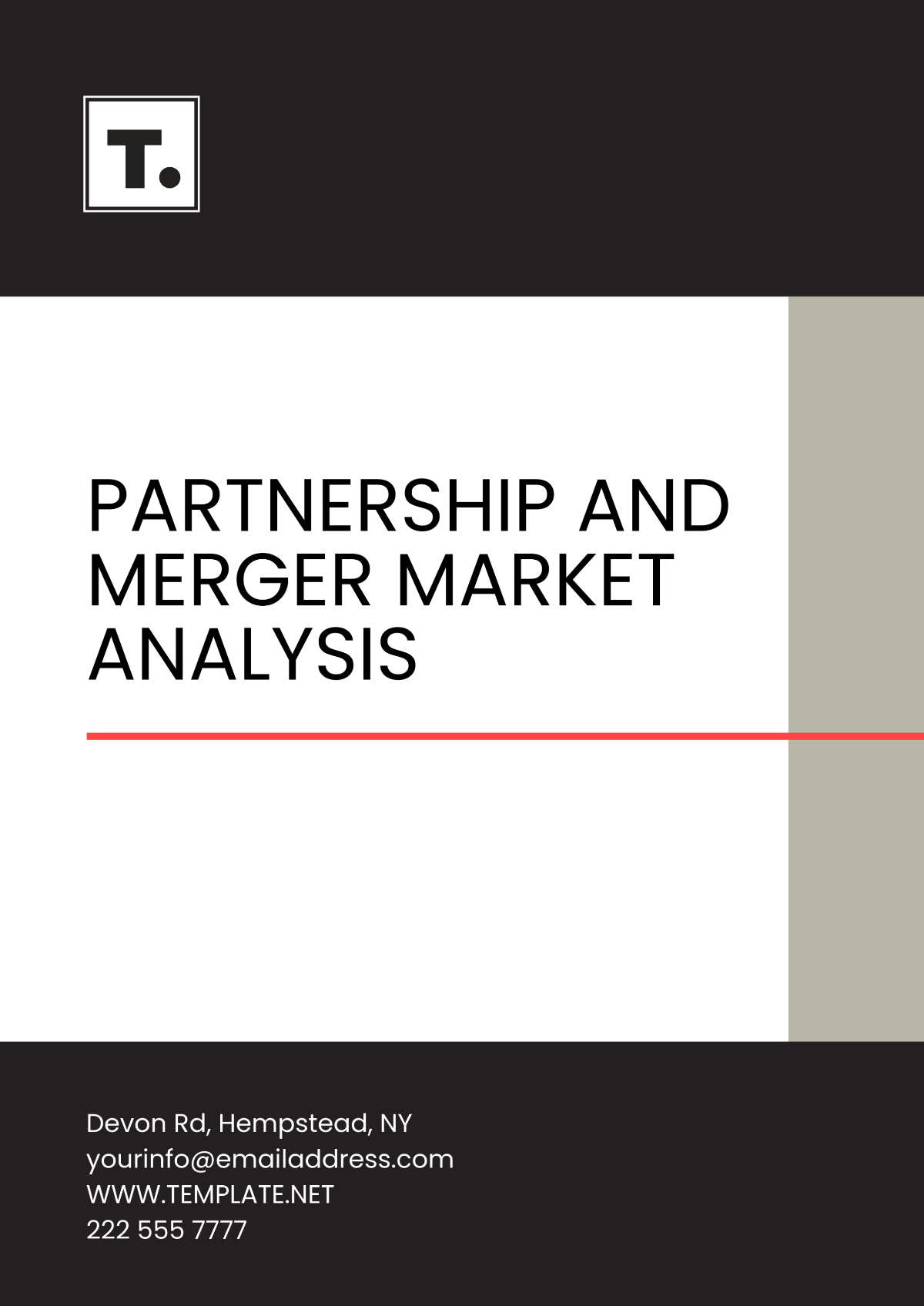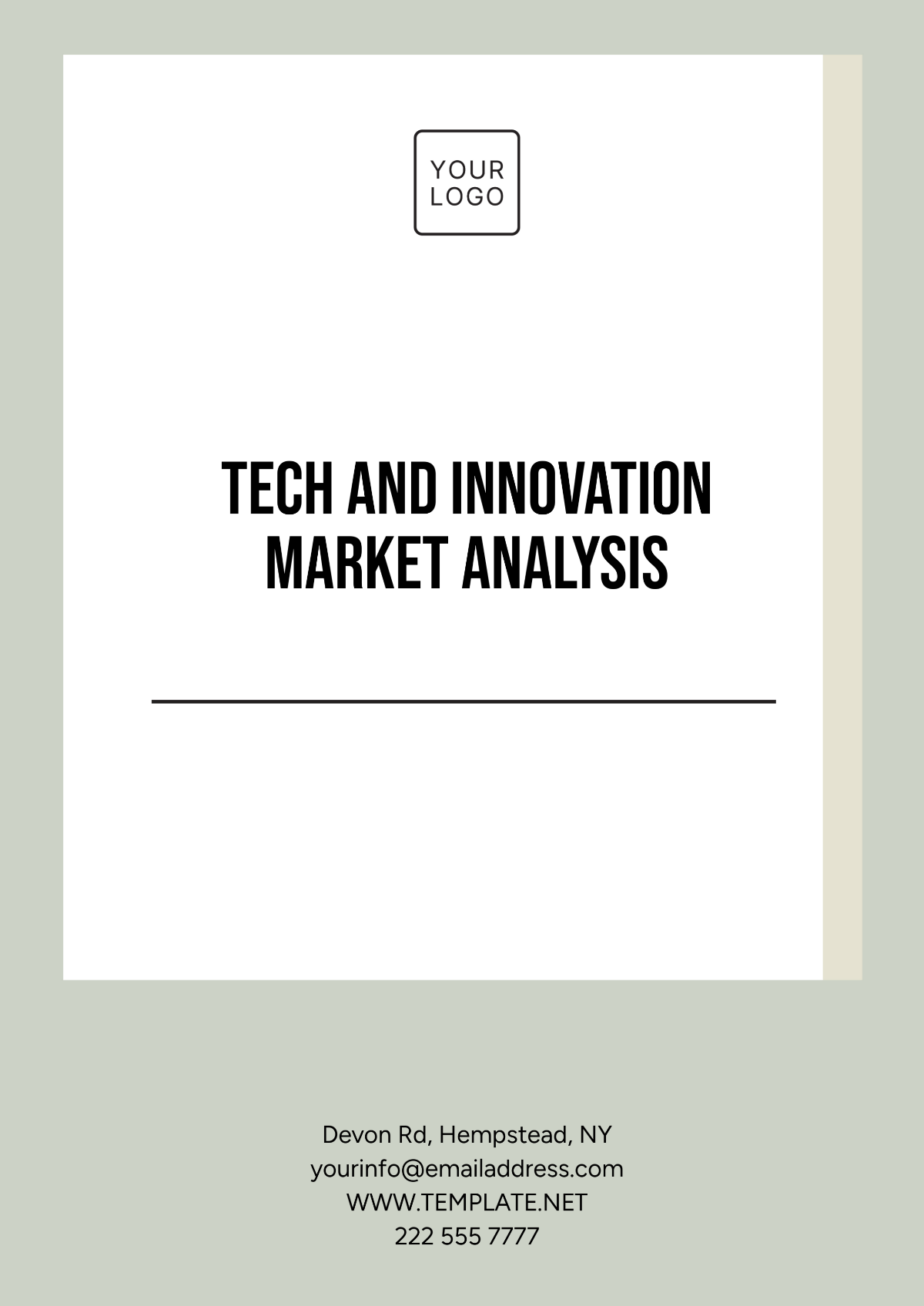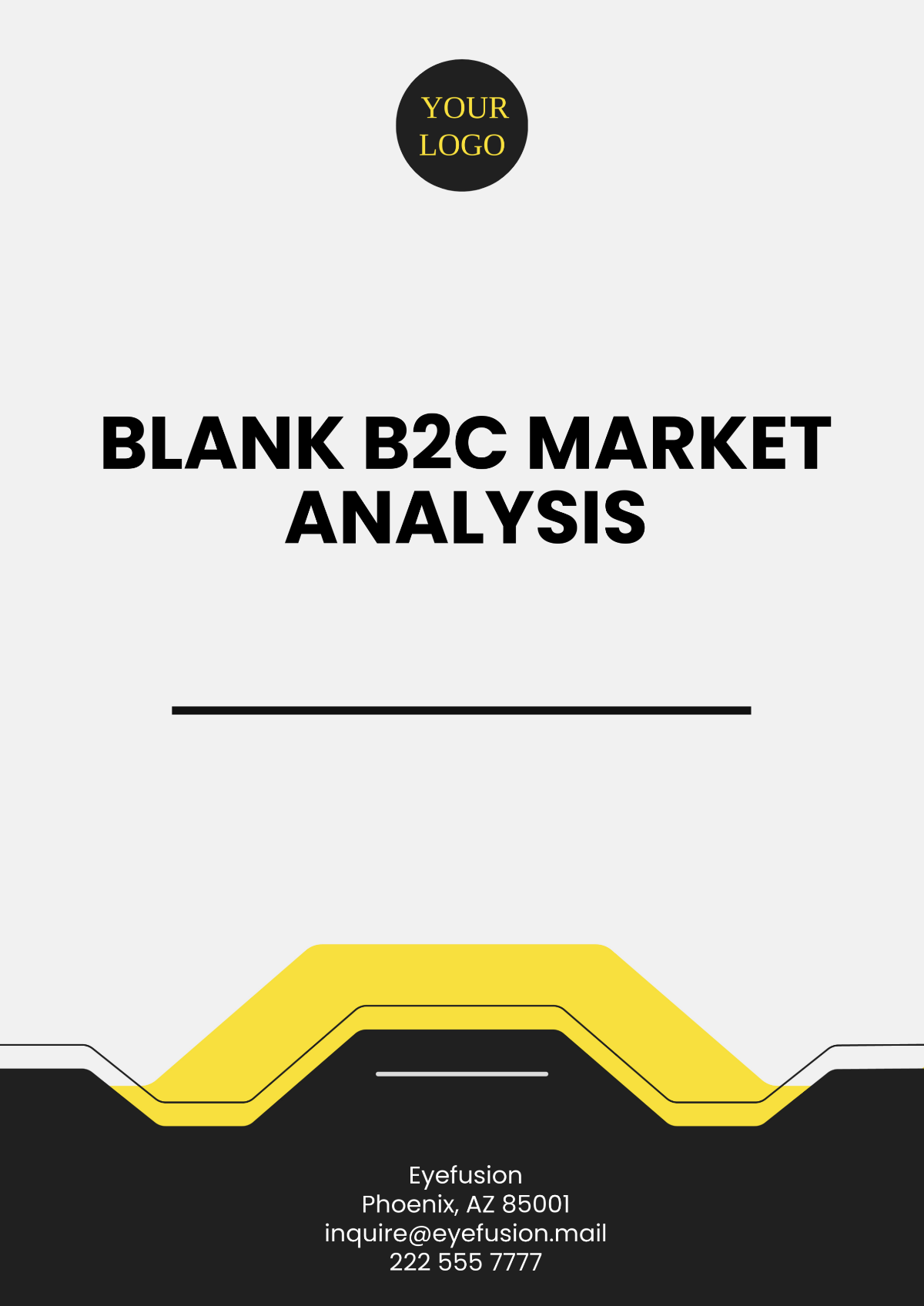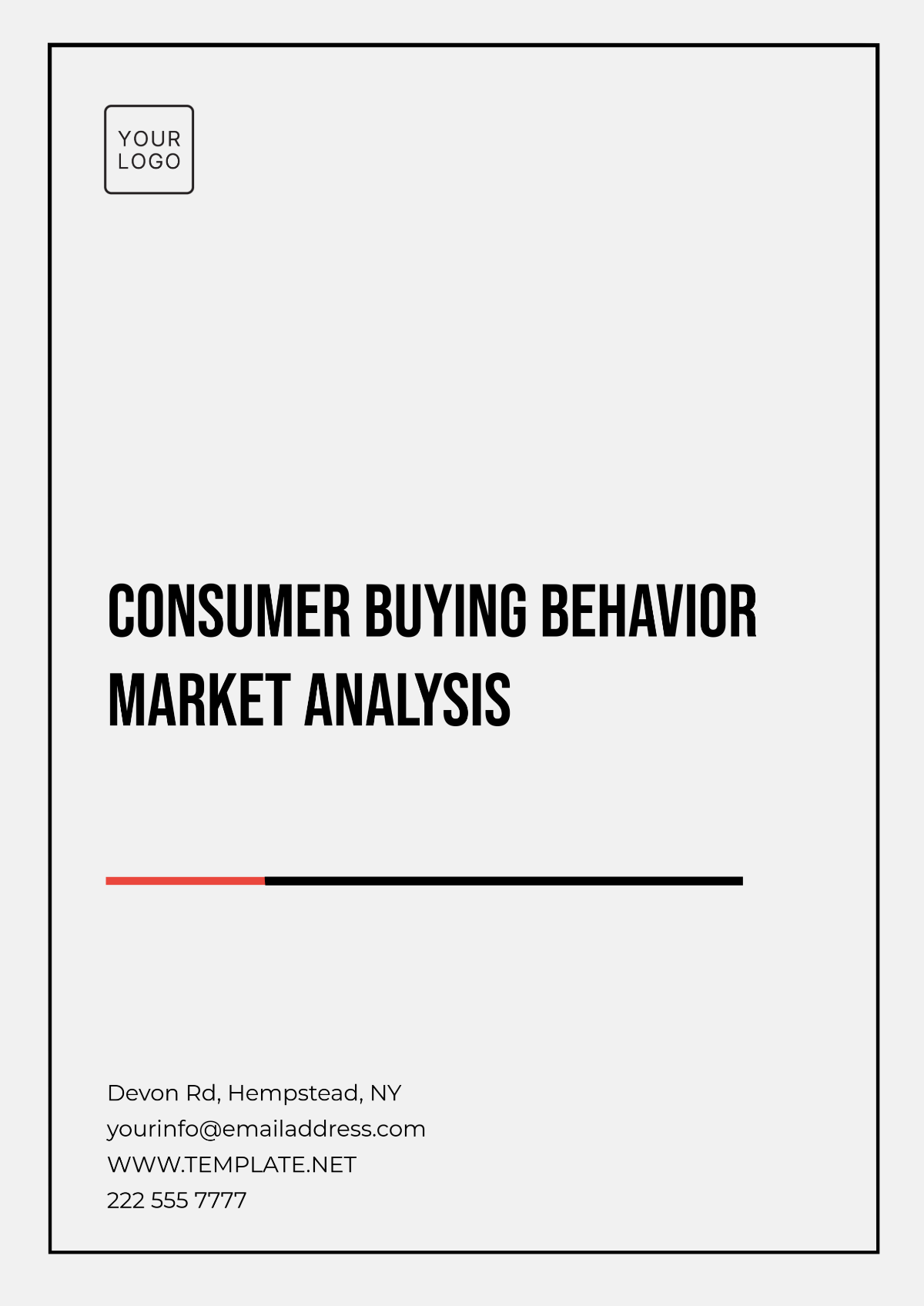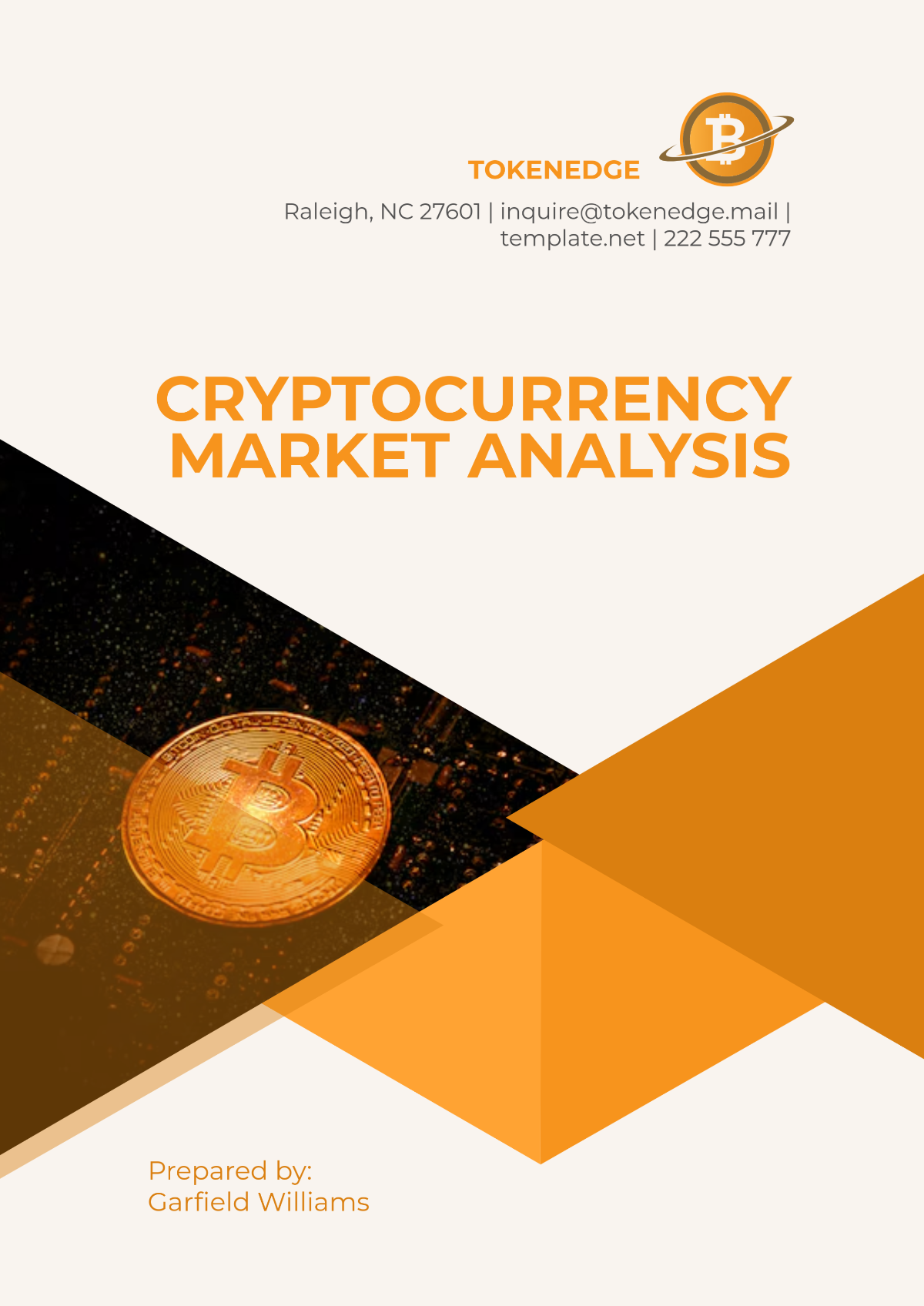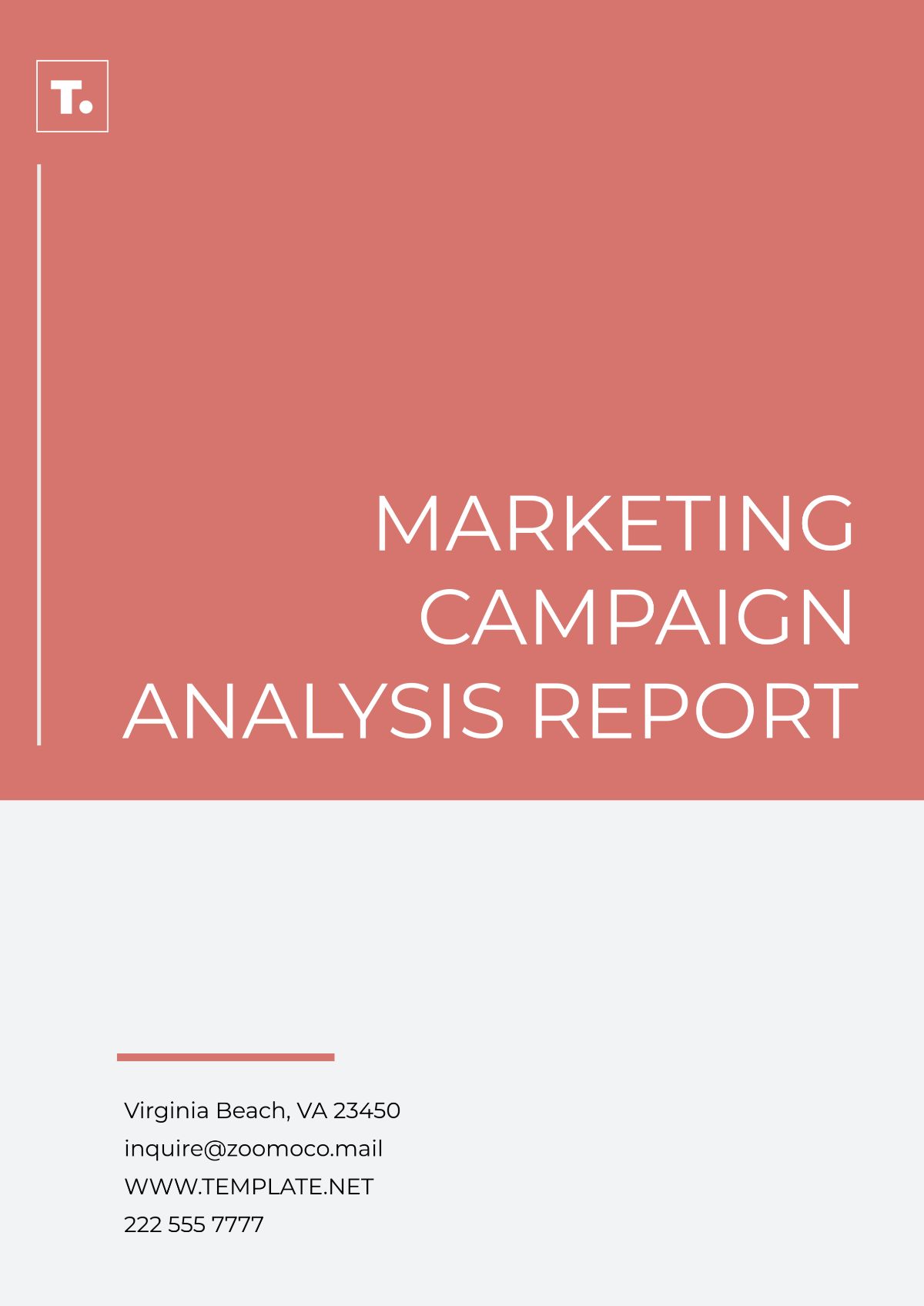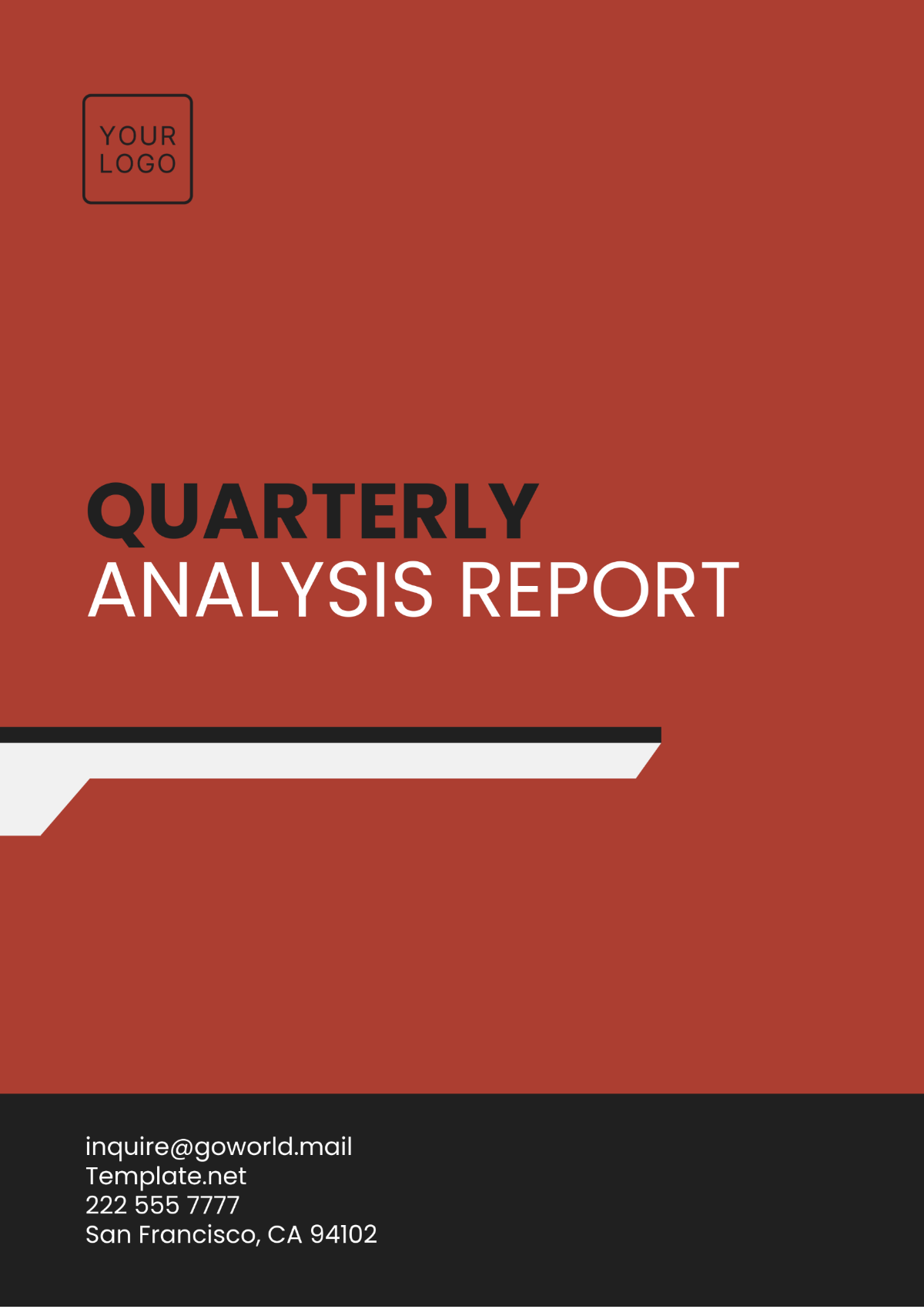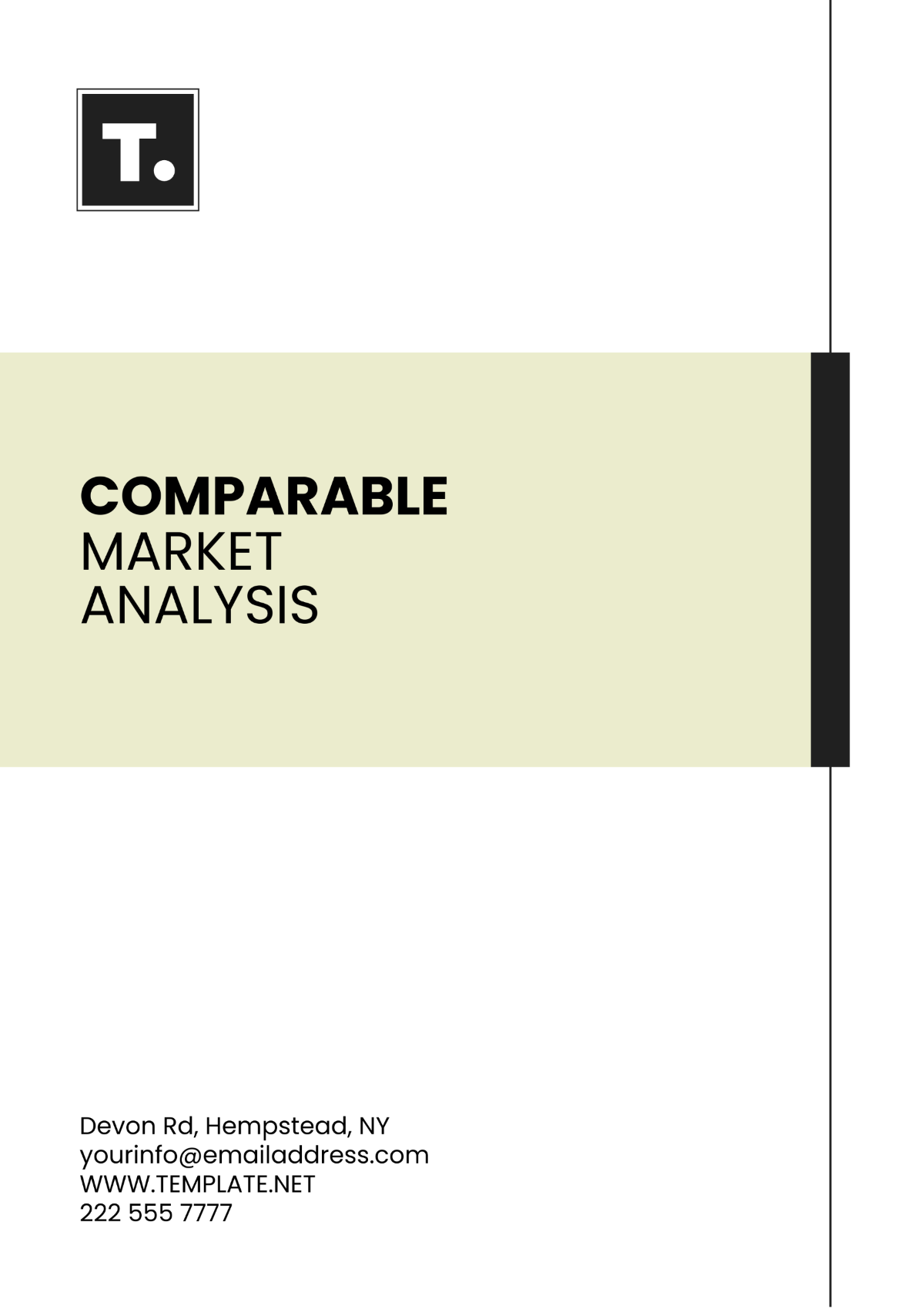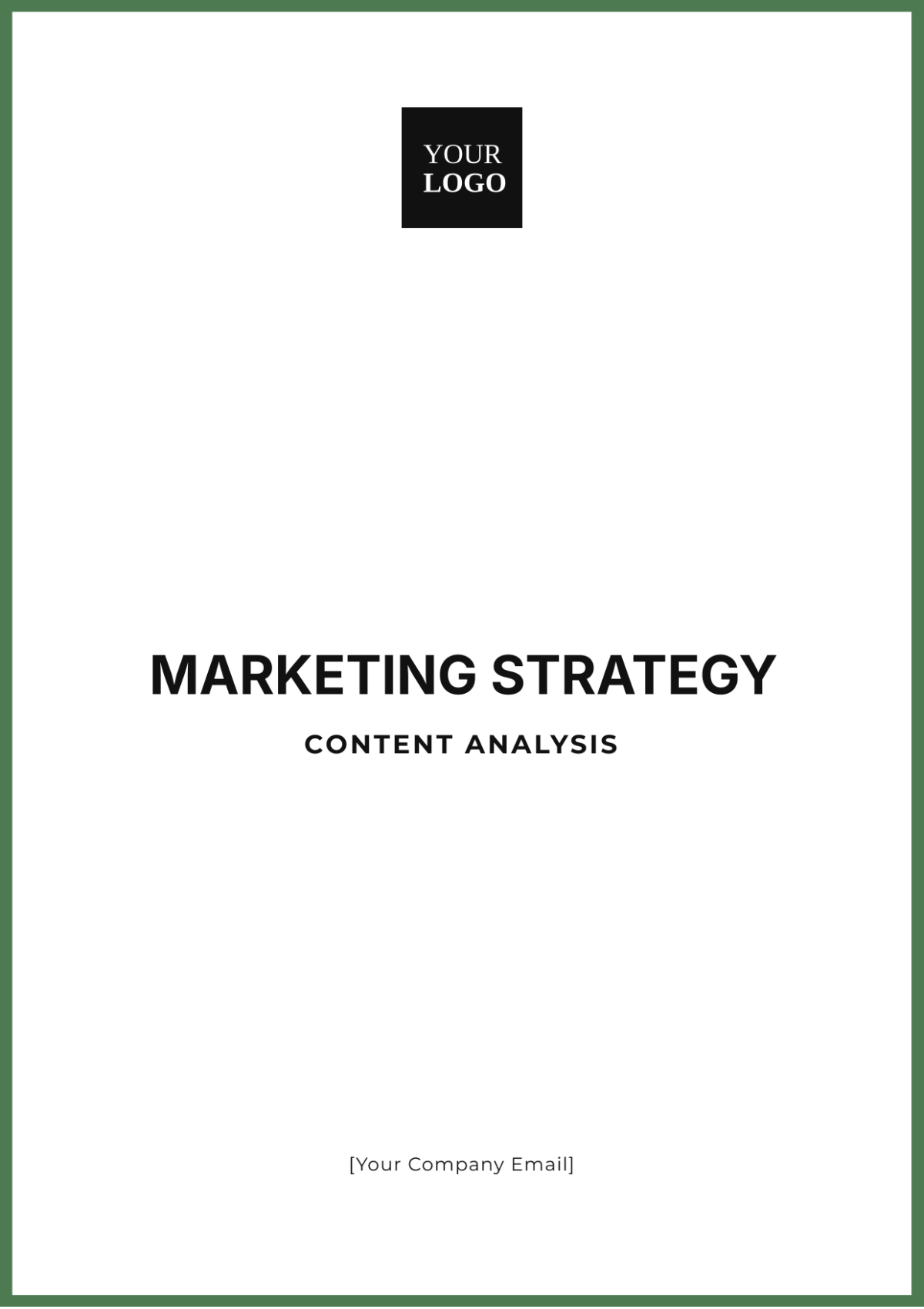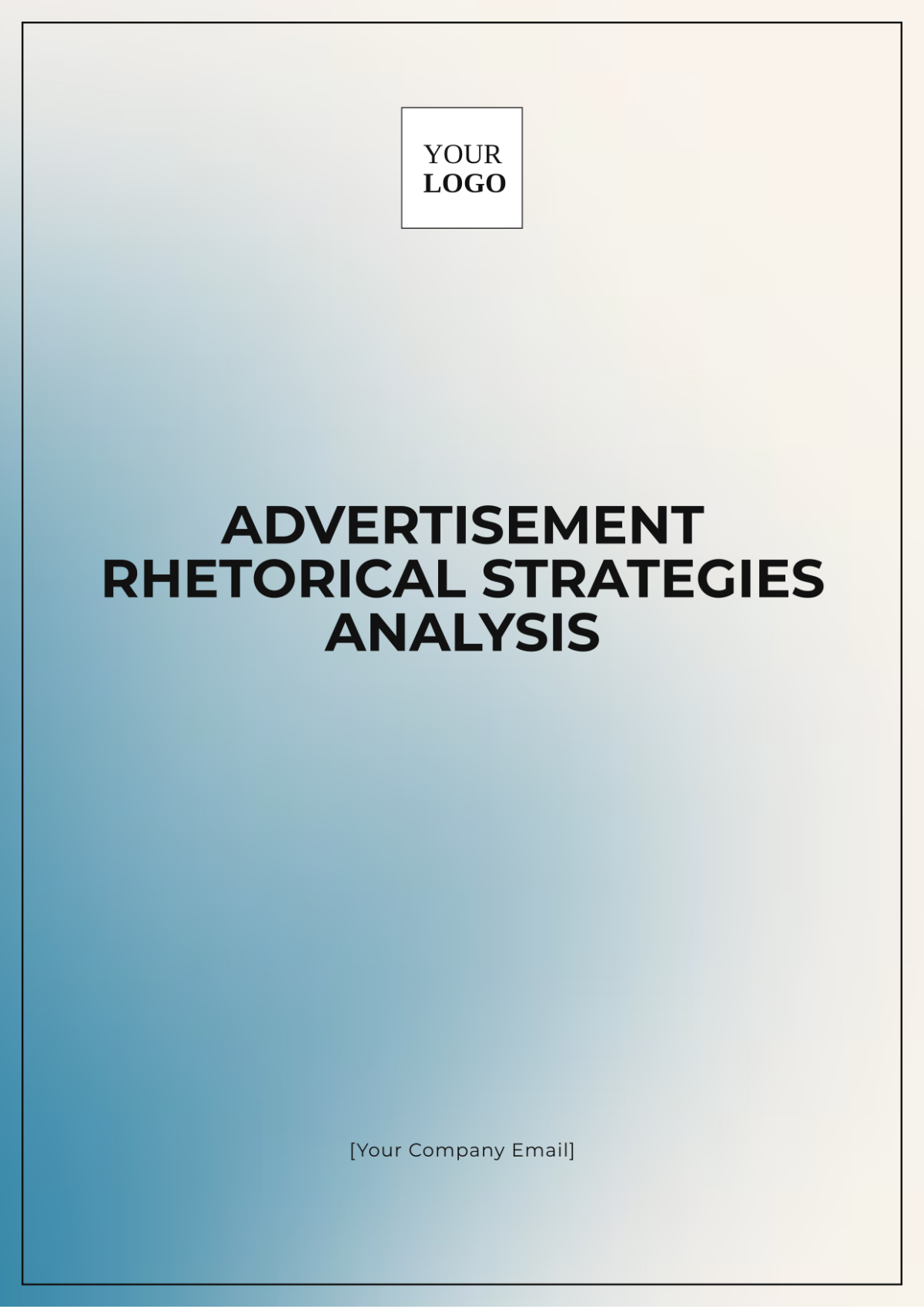Marketing Trade Show Benchmarking Analysis
Executive Summary
In [Month Day, Year], [Your Company] undertook a momentous endeavor by participating in [Event Name] at the [Venue]. This document is a comprehensive analysis of our involvement, detailing the meticulous planning, execution, and evaluation of our presence at this cutting-edge technology event.
[Event Name], a pinnacle event in the tech industry, provided a fertile ground for us to strengthen our brand presence, cultivate new business opportunities, and unveil our flagship product, [Product Name], to a diverse and discerning audience. Our goal was not just to participate but to make a resounding impact, setting new benchmarks for future trade show engagements.
Our multifaceted approach to this endeavor encompassed strategic pre-event preparation, a dynamic event execution strategy, and meticulous post-event evaluation. These components were carefully orchestrated to achieve predefined objectives, demonstrating the effectiveness of our participation.
The following sections delve into the intricate details of our journey at [Event Name]. We explore our objectives, the thoughtfully designed booth, captivating marketing materials, staff training efforts, and our pre-event promotional campaign. Moving forward, we scrutinize the execution phase, examining attendee engagement strategies, lead generation outcomes, and competitive insights. Finally, the document culminates with a thorough post-event evaluation, encompassing data collection and a rigorous ROI analysis.
The insights gleaned from this analysis serve as a compass guiding our future endeavors in trade show marketing. The recommendations derived will not only reinforce our presence at such events but also propel us toward sustained growth and market leadership.
Introduction
[Event Name] was not merely an event; it was a pivotal juncture in [Your Company]'s journey towards technological innovation and market prominence. Held at the [Venue], this event brought together the brightest minds, the latest innovations, and the most discerning tech enthusiasts from across the globe.
As a leading player in the technology industry, [Your Company] recognized [Event Name] as a strategic opportunity to showcase our prowess, engage with a diverse audience, and, most importantly, introduce the world to our groundbreaking [Product Name]. This event was not just about participation but about seizing the moment to define the future of computing technology.
In this document, we embark on a comprehensive journey, dissecting our participation in [Event Name]. We begin by elucidating our objectives, which served as the guiding stars for our endeavors. We then delve into the meticulous preparations that went into creating a booth that not only showcased our technology but also mesmerized attendees. The creation of engaging marketing materials and the rigorous training of our staff were crucial aspects of our pre-event preparation.
The heart of our journey lies in the event execution phase, where we unravel how we captured the attention of attendees, generated a bounty of leads, and gained insights from a competitive analysis. The culmination of our efforts, however, was the post-event evaluation, where we meticulously collected data, gauged our return on investment, and unveiled critical insights that will shape our future endeavors.
[Event Name] was more than just an event; it was a testament to our commitment to innovation, excellence, and market leadership. Our presence at this event was not an isolated moment but a reflection of our vision for the future of technology. This document is a testament to our dedication and the beginning of a new chapter in our journey toward technological advancement.
Objectives
Our objectives for [Event Name] were meticulously designed to align with our overarching business goals and the unique opportunities presented by this high-profile event. These objectives served as the guiding stars for our participation, shaping every facet of our strategy and execution.
1. Lead Generation
One of our primary objectives was to generate a minimum of [000] qualified leads during [Event Name]. We recognized the trade show's potential as a fertile ground for connecting with industry professionals, decision-makers, and tech enthusiasts. These leads would be instrumental in expanding our customer base and fostering long-term relationships with potential clients.
2. Brand Exposure
Increasing our brand exposure was another pivotal objective for [Event Name]. In a rapidly evolving tech landscape, establishing a strong brand presence is paramount to staying relevant and competitive. We aimed to boost our brand's visibility by at least [00]% compared to the previous year's event.
3. Product Promotion
A central focus of our participation in [Event Name] was promoting our latest innovation, the [Product Name]. We aimed to secure a minimum of [00] pre-orders for this groundbreaking product, demonstrating its market potential and positioning it as a game-changer in the computing world.
I. Pre-Event Preparation
Pre-event preparation involves all the activities and strategies undertaken by the company before the trade show to ensure successful participation.
A. Booth Design and Setup
Booth design and setup are critical components of pre-event preparation. For [Event Name], [Your Company] invested in a visually striking booth with a futuristic theme. The design featured interactive elements, such as a working [Product Name] demonstration, which not only attracted attendees but also allowed them to experience the product firsthand. The booth layout was carefully planned to maximize visitor flow, ensuring that attendees could easily access product displays and presentation areas.
B. Marketing Materials
Marketing materials played a crucial role in our pre-event preparation. We created eye-catching brochures and detailed product flyers that highlighted the key features and benefits of our [Product Name]. To engage attendees, we also [Product Name] as giveaways. These materials were not only visually appealing but also conveyed essential information about our product.
C. Staff Training
Staff training was a priority to ensure our team could effectively engage with attendees. We conducted comprehensive training sessions that covered product knowledge, effective communication techniques, and strategies for addressing attendee inquiries. Role-play scenarios were incorporated to improve staff's ability to handle various visitor interactions. This training helped our team feel confident and well-prepared for engaging with attendees during the event.
D. Pre-Event Promotion
Pre-event promotion was a multi-channel effort. We initiated email marketing campaigns to our existing customer base, informing them about our participation and inviting them to visit our booth. On social media platforms, we teased highlights of our [Product Name] and encouraged followers to register for the event. Additionally, we created a dedicated event landing page on our website, where visitors could learn more about our participation and pre-register for the event. These efforts resulted in a [00]% increase in pre-event booth registrations compared to the previous year.
II. Event Execution
Event execution refers to the strategies and activities carried out during the trade show to engage attendees, generate leads, and achieve the predetermined objectives.
A. Attendee Engagement
Attendee engagement was a central focus during the event. Our booth staff actively engaged attendees through live demonstrations, engaging presentations, and interactive Q&A sessions. Interactive games and challenges were strategically placed within our booth to maintain visitor interest and encourage longer interactions. Attendees were encouraged to participate in these activities, which not only educated them about our product but also created a memorable experience.
B. Lead Generation
Lead generation was significantly successful at [Event Name]. Our staff efficiently collected [00] qualified leads during the event. These leads showed genuine interest in our [Product Name], making them highly valuable prospects. We used lead capture software and forms to streamline the process, ensuring that no potential lead was missed. Follow-up procedures were also in place to nurture these leads after the event.
C. Competitor Analysis
Competitor analysis was conducted to gain insights into the strategies and activities of our competitors at [Event Name]. We observed that many competitors had less engaging booth designs and fewer interactive activities. This allowed us to stand out in the crowded expo hall and attract more attendees to our booth. By identifying gaps in our competitors' approaches, we were able to position ourselves more effectively in the market.
III. Post-Event Evaluation
Post-event evaluation involves analyzing data and feedback gathered during the event to assess its success and identify areas for improvement.
A. Data Collection
After the event, we meticulously collected and analyzed data, including the 700 leads generated, attendee feedback, and booth traffic patterns. The data revealed that 90% of the leads expressed a strong interest in purchasing our [Product Name]. Additionally, attendee feedback emphasized the interactivity of our booth as a major attraction. This data allowed us to gain valuable insights into attendee preferences and interests.
B. ROI Analysis
To assess the return on investment, we conducted a thorough ROI analysis. This analysis compared the total expenses incurred for our participation in [Event Name] to the potential revenue generated from lead conversions and pre-orders. The results indicated that for every dollar invested in the event, we generated $5 in potential revenue, highlighting the event's success in terms of ROI.
IV. Key Findings and Insights
The post-event analysis of our participation in [Event Name] unearthed a wealth of key findings and invaluable insights that shed light on the success of our strategies, areas of improvement, and the broader implications for our future trade show endeavors.
A. Interactive Booth Designs
One of the standout findings was the undeniable effectiveness of interactive booth designs in capturing attendees' attention and keeping them engaged. The [Product Name] demonstration, in particular, served as a magnet for attendees, drawing them into our booth. Attendees were not merely passive observers but active participants, experiencing the product's capabilities firsthand. This finding underscored the importance of investing in innovative and interactive booth designs to stand out in the competitive trade show environment.
B. Pre-Event Promotion Impact
Our pre-event promotion efforts significantly impacted booth traffic. The [00]% increase in pre-event booth registrations compared to the previous year indicated that our marketing campaigns resonated with our target audience. Attendees arrived at [Event Name] with heightened anticipation, already familiar with our brand and eager to explore our offerings. This insight reinforced the critical role that pre-event promotion plays in attracting a larger and more engaged audience to our booth.
C. Competitor Analysis
Our competitive analysis yielded valuable insights into the strategies and activities of our competitors. Notably, many competitors had relatively static booth setups with limited interactive elements. This observation highlighted a gap in their approach, as their booths failed to capture attendees' attention and create memorable experiences. By contrast, our dynamic booth design and engaging activities allowed us to outshine the competition and emerge as a frontrunner in the event. This finding emphasized the importance of continuous competitor analysis to identify opportunities for strategic advantage.
D. Strong Lead Quality
A pivotal insight from our post-event evaluation was the quality of the leads generated during [Event Name]. A remarkable 90% of the leads expressed a strong interest in purchasing our [Product Name]. This finding emphasized not only the quantity but also the quality of leads, indicating that our engagement strategies effectively identified and attracted prospects genuinely interested in our product. These high-quality leads formed a solid foundation for future sales and business growth.
E. ROI Success
The analysis confirmed the event's success in terms of return on investment (ROI). For every dollar invested in [Event Name], we generated $[0] in potential revenue from lead conversions and pre-orders. This ROI underscored the event's value and validated our decision to participate. It also highlighted the significance of measuring ROI as a critical metric for assessing the success of trade show participation.
V. Recommendations
The findings and insights derived from our participation in [Event Name] have paved the way for a series of actionable recommendations. These recommendations are designed to enhance our future trade show performance, capitalize on our strengths, and address areas where improvements can be made:
A. Continued Investment in Interactive Booth Designs
Building on the success of [Event Name], we recommend a continued investment in interactive booth designs. These designs, which proved highly effective in engaging attendees, should remain a cornerstone of our trade show strategy. We should explore even more innovative and immersive experiences, leveraging emerging technologies such as augmented reality (AR) and virtual reality (VR) to create memorable interactions that set us apart from competitors.
B. Enhanced Pre-Event Promotion
Our success in attracting a larger and more engaged audience through pre-event promotion demonstrates its significance. To further optimize this strategy, we recommend a more comprehensive and integrated approach. This includes leveraging data analytics to refine audience targeting, crafting compelling pre-event content, and harnessing social media influencers to amplify our reach. A comprehensive content calendar and email automation can also ensure a consistent and impactful pre-event presence.
C. Continuous Competitor Analysis
The competitive advantage we gained through a rigorous competitor analysis cannot be overstated. To maintain this advantage, we should establish a dedicated team responsible for continuous competitor monitoring and analysis. This team will track competitor activities, identify emerging trends, and pinpoint gaps in their strategies that we can exploit. Regular updates on competitor insights should inform our trade show planning and execution.
D. Lead Nurturing Strategy
Given the exceptional quality of leads generated at [Event Name], we recommend implementing a robust lead nurturing strategy. This strategy should involve personalized follow-ups, tailored content, and ongoing engagement to convert leads into customers. Furthermore, implementing a customer relationship management (CRM) system can streamline lead management and improve the efficiency of our lead nurturing efforts.
E. Diversification of Trade Show Portfolio
While [Event Name] was undoubtedly a success, we should consider diversifying our trade show portfolio. Exploring opportunities at other relevant industry events can expand our reach and expose us to different customer segments. This diversification strategy should align with our overall marketing goals and cater to specific product launches and target audiences.
Conclusion
[Event Name] marked a significant milestone in our journey toward technological innovation and market leadership. This analysis has showcased the meticulous planning, dynamic execution, and insightful evaluation that underpinned our participation in this groundbreaking event.
As we conclude this document, we reaffirm our commitment to excellence and innovation. Our presence at [Event Name] was not a singular achievement but a stepping stone to a future where we continue to push the boundaries of technology and redefine industry standards.
The recommendations outlined here are not just steps forward but a roadmap to sustained success. By building on our strengths, addressing areas for improvement, and embracing emerging trends, we are poised to shape the future of technology and establish ourselves as a force to be reckoned with in the industry.
We extend our gratitude to every member of our team who contributed to the success of [Event Name] and to our valued customers and partners who have supported us on this remarkable journey. With our collective vision and unwavering dedication, the future holds limitless possibilities, and we eagerly anticipate the next chapter in our pursuit of technological excellence.


